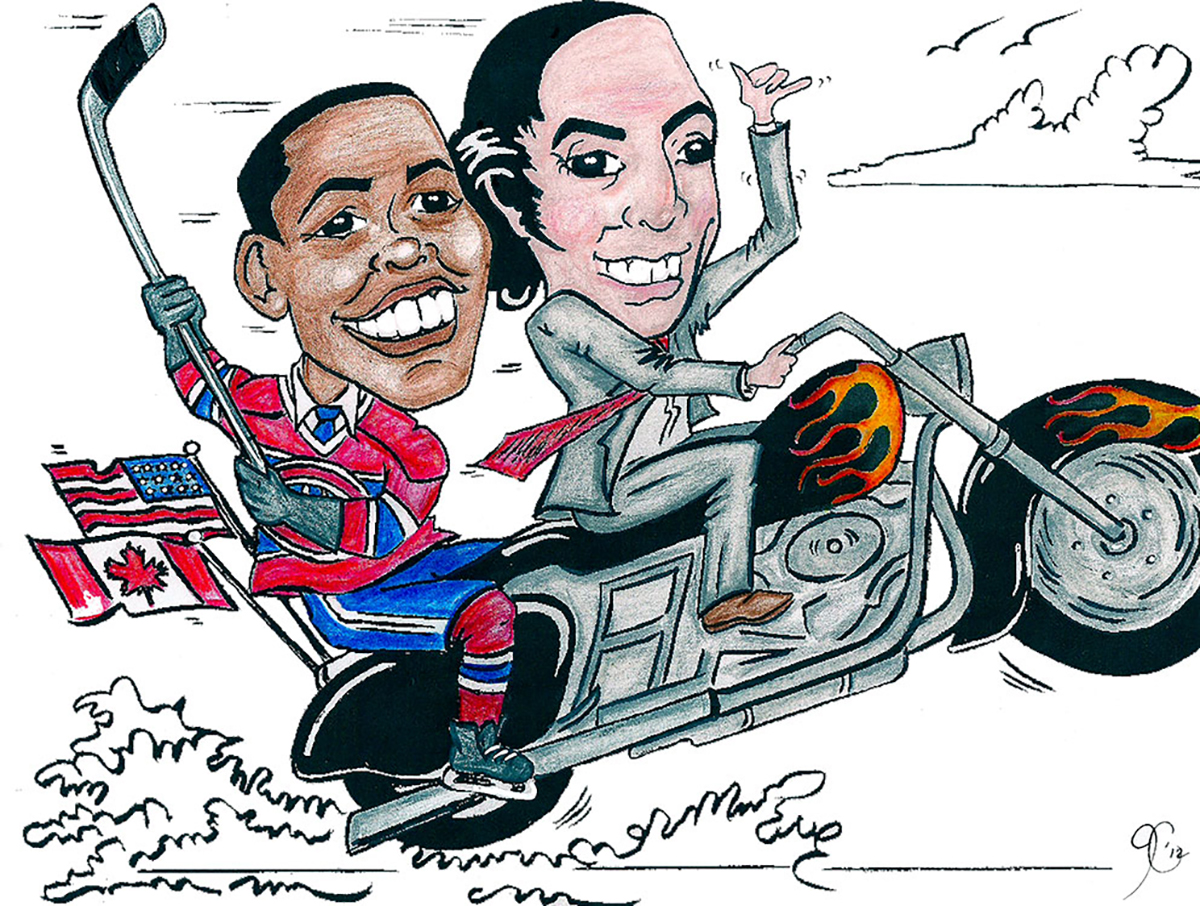
Updated: October 2013
Updates foreign policy developments in Syria, as well as legal changes involving gay rights, cannabis use, civil liberties of American citizens and conclusion at end of story comparing Obama with Trudeau.
Published: April 2012
Heir to Pierre Elliott Trudeau’s liberalism
Obama is a natural fit to lead Canada after serving out his U.S. presidency
Analysis by WARREN PERLEY
Writing from Montreal
A prophet is not without honour, save in his own country and in his own house. – Matthew 13:57
Jesus knew the score 2,000 years ago when, according to the New Testament Gospels, he answered his doubters in this manner. So Barack Obama would do well to heed his Saviour’s message and consider a move to Canada where he would be welcomed as the legitimate heir to the liberalism espoused by Pierre Elliott Trudeau, one of this country’s most dynamic prime ministers for 16 years.
Those who scoff at the notion of a U.S.-born citizen becoming prime minister of Canada should know that it is legal for a naturalized Canadian, even one with dual U.S. citizenship, to hold the highest elected office in Canada— unlike the U.S. where the Constitution specifies that the president must be native-born.
I am not suggesting that Obama, his wife, Michelle, and daughters Malia and Sasha chuck the White House in favour of taking a run at 24 Sussex Drive, the prime minister’s residence in Ottawa, as long as he holds the presidency. However, after his second term in the White House comes to an end in January 2017, he could make history again by running for prime minister of Canada. (He already made history once when he was elected the first African-American president in 2008.)
Using a sports analogy, it would be akin to an athlete playing the quarterback position on a Super Bowl winner moving to Canada to play goalie and leading a once-proud National Hockey League franchise, such as the Montreal Canadiens, back to Stanley Cup glory.
The fact that Obama is not considered a prophet in his own country is obvious from the harsh treatment he has received in the U.S. media at the hands of both the right, which attacks him for too much government interference in the private sector, and from the left, which accuses him of not doing enough for the “have-nots”.
Shrill partisan attacks have become de rigueur in the U.S. media for all presidents, regardless of their party affiliation; has anyone forgotten the lambasting inflicted by the liberal media on then-president George W. Bush? But it is still surprising to many Canadians, who do not play partisan politics with the same fervor as their American neighbours, to see just how vitriolic the right-wing media has become in its attacks on Obama. We’ve grown accustomed to hyperbole by ratings-conscious talk show hosts such as Rush Limbaugh and some on the Fox Network, but it’s disappointing to see a long-established, conservative business publication such as Forbes employing smear tactics on Obama.
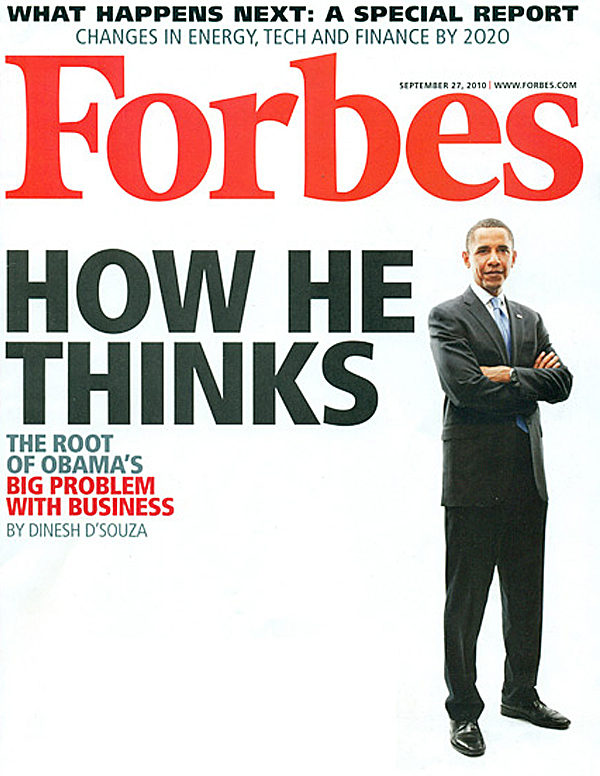
The September 27, 2010 cover of Forbes, which has described itself as being “recognized worldwide as the bible of capitalism”, had a full-length photo of Obama standing with his arms folded and looking rather small next to a big headline titled, HOW HE THINKS. The cover story by Dinesh D’Souza purported to tell us what motivates Obama’s policy-making. Of course, it was based on hypothesis and generalizations, such as D’Souza’s opening sentence: “Barack Obama is the most anti-business president in a generation, perhaps in American history.”
Such a piece should have been clearly labeled as “Analysis”, “Opinion” or “Editorial”. Instead it was presented as though it was a cover “news” story. Even as an “analysis”, it was a fatuous and unsupported diatribe against the president, accusing him of implementing policies in support of his late father’s anti-colonial mindset. D’Souza’s last paragraph summarized his thesis:
But instead of readying us for the challenge, our President is trapped in his father’s time machine. Incredibly, the U.S. is being ruled according to the dreams of a Luo tribesman of the 1950s. This philandering, inebriated African socialist, who raged against the world for denying him the realization of his anticolonial [sic] ambitions, is now setting the nation’s agenda through the reincarnation of his dreams in his son. The son makes it happen, but he candidly admits he is only living out his father’s dreams. The invisible father provides the inspiration, and the son dutifully gets the job done. America today is governed by a ghost.
Editor-in-Chief Steve Forbes, whose family has owned the publication since its founding in 1917, took his own shot at Obama in that same September 27, 2010 issue, writing in his Fact and Comment section near the front of the magazine about how even Vladimir Lenin, one of the fomenters of the Russian Revolution of 1917 which created the Soviet Union and its communist system, was seemingly more flexible than Obama.
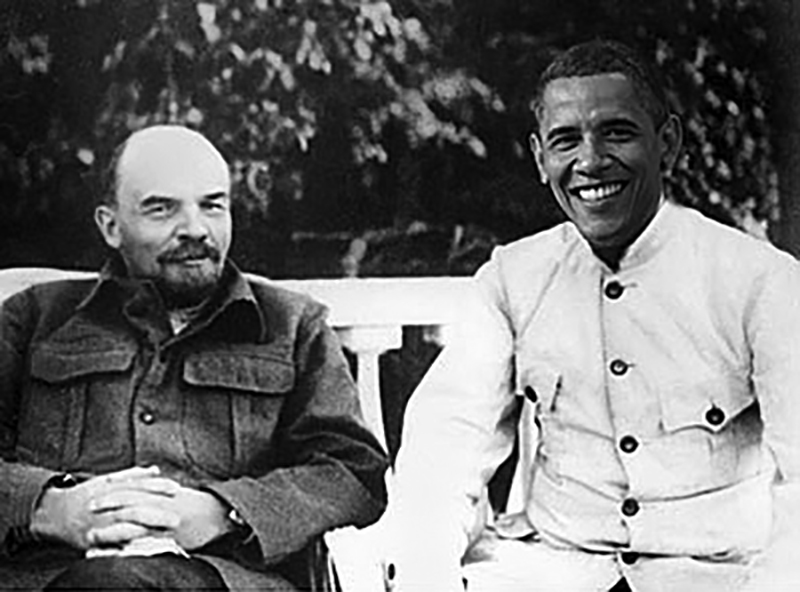
To emphasize his point that Obama is a dangerous, rigid ideologue in the mold of — or perhaps worse than — Lenin, Forbes deviated from standard journalistic practice by having a 1922 photo of Lenin sitting next to his murderous successor Joseph Stalin digitally altered to impose the head of a smiling Obama on Stalin’s body. There was no cutline indicating that the photo had been manipulated; a reader would have no way of knowing that the original photo dated from 1922 and actually showed Lenin with Stalin.
Such digital manipulation is both damaging to the standards of serious journalism and unfair. It is one thing to disagree with Obama’s policies. It is quite another to cast the president into disrepute with an altered photograph and a cutline which reads: “Even a rabidly ruthless revolutionary like Lenin knew how to pretend to be flexible when necessary.”
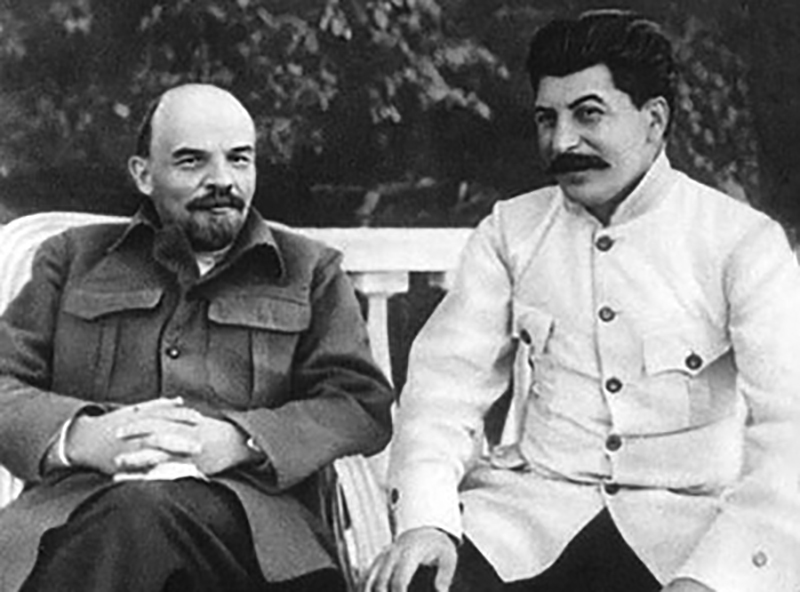
But a liberal politician with socialist tendencies, such as Obama, is a lightning rod in a U.S. society which has grown increasingly conservative over the last two decades. A 2010 Gallup poll of 8,000 Americans found that 42 percent described themselves as either very conservative or conservative. In 1992, that figure was 36 percent. The 2010 Gallup poll showed 20 percent of Americans consider themselves very liberal or liberal, and 35 percent described themselves as moderate.
Canada does not conduct surveys along the lines of conservative, liberal and moderate, but a February 2010 Harris-Decima poll paid for by the Manning Centre, a conservative think-tank based in Calgary, concluded that most Canadians identify with the centre of the political ideology scale, and that centre is increasingly embracing “traditionally conservative values.”
Some 47 percent of those Harris-Decima respondents calling themselves centrists said they voted for the Conservative Party in 2008. By comparison, 11 years earlier a similar poll showed that the Liberal Party was the choice of 41 percent of voters who identified themselves as centrists. The fact that both Liberal and Conservative voters in Canada describe themselves as centrists and switch back and forth between the two parties shows that there is much less polarity between left and right in Canada, as compared with the U.S.
For example, a Liberal Party member in Canada would be the equivalent of a card-carrying Democrat in the U.S. In Canada, the Conservative Party is to the right of the Liberal Party, but still close to the centre and nowhere as far to the right as the Republican Party is in the U.S.
Further contrasting the political spectrums between the two countries is the fact that Canada’s socialist political movement, the New Democratic Party (NDP), heavily supported by organized labour, is well to the left of the Liberal Party. The NDP is in favour of extensive government intervention in economic and social policies. Whereas in the U.S., there are extreme movements (not political parties) to both the left and right — Occupy Wall Street is to the left of the Democratic Party and the Tea Party is to the right of the Republicans.
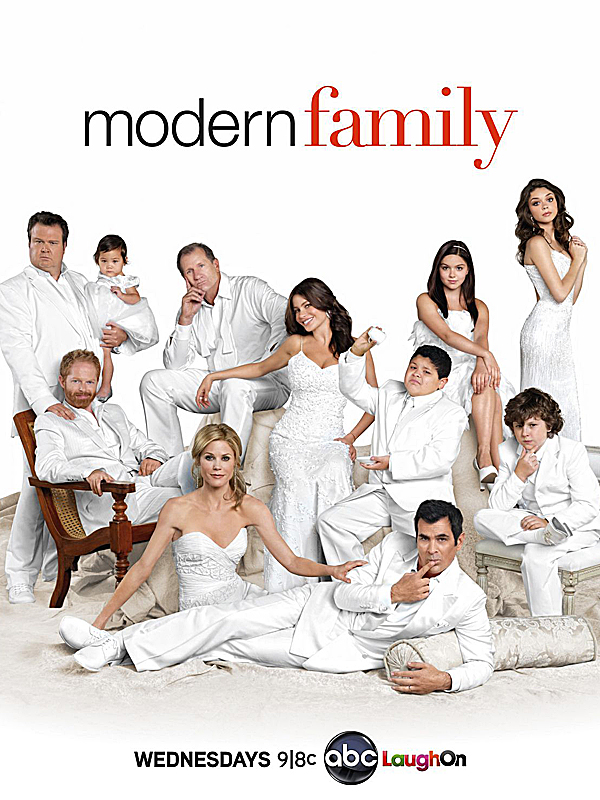
Due to its multiracial makeup where immigrant communities maintain many of their cultural homeland attachments, the prevailing sentiment in Canada is towards liberal socialism accepting of multiculturalism and a belief that government is the answer to societal issues, including public medical care and financial inequality. Contrast that attitude with the U.S. cultural melting pot, where the emphasis is on private sector solutions to societal issues and government is seen as the problem.
U.S. history has been characterized by revolution, starting with the American Revolutionary War against England (1775-1783), compared with a Canadian history of evolution which culminated with the British Parliament passing the Statute of Westminster on December 11, 1931 bestowing full independence on Canada as one of the British Empire’s self-governing dominions.
Although Obama has attained the highest elected office in one of the most powerful countries in the world, a close examination of his family background, social beliefs and political tendencies show that he is a more natural fit to lead a pacifist, centrist, multiracial country, such as Canada, rather than the right-of-centre U.S., with its tradition of foreign military interventions.
On a subliminal level, Obama himself likely recognizes his affinity with Canada, given that he said in a December 14, 2011 interview that his family’s favorite television show is Modern Family, which won a Golden Globe award for best TV comedy as chosen by the Foreign Press Association in January 2012. Anyone conversant with Canadian culture who has watched that show, which deals with an extended family made up of a gay couple, a straight couple and a multiracial couple, might easily conclude that such a family in real life would find more social acceptance and fulfillment in Canada than in the U.S.
LBJ led the wayObama is the first elected leader in North America since Canada’s Trudeau in 1968 to take a strong stand in favour of left-of-centre social issues, and he is the most liberal president since Lyndon Baines Johnson, who succeeded the assassinated John Kennedy on November 22, 1963, and was responsible in his five years in office for pushing through Congress his “ War on Poverty” and his “Great Society” legislation which included laws upholding civil rights, education reform, environmental protection, public broadcasting, Medicaid and Medicare. The Medicare program came into effect in July 1965 to offer affordable medical services for elderly Americans. Johnson gave the first two Medicare cards to former president Harry S. Truman and his wife, Bess, after signing the bill into law at the Truman Library in Independence, Missouri.
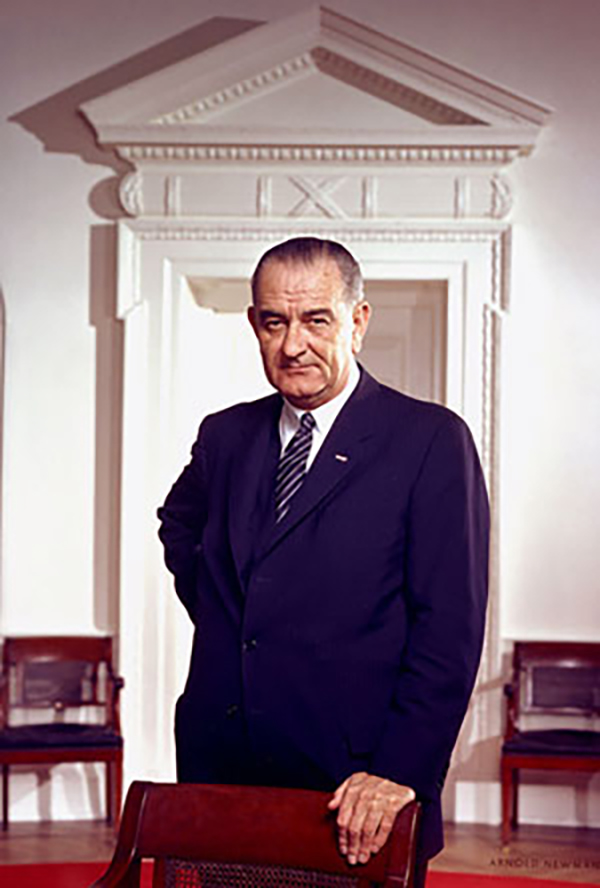
Trudeau seemed to have quite admired Johnson’s domestic social policies, although he opposed U.S. military intervention in Vietnam. In an impromptu discussion with youth delegates to the Liberal Party convention in early April 1968, just days after Johnson announced on March 31, 1968 that he would not seek another term as president in the November 1968 election — primarily because of public opposition in the U.S. to the Vietnam War — Trudeau described “the great American society” as “a most remarkable system.”
Johnson coined the term “Great Society” to describe his legislative program to help the “have-nots” in the tradition of Franklin Delano Roosevelt’s “New Deal” social initiatives of the Great Depression era. Ascending to power as prime minister just as Johnson was resigning the presidency in 1968, Trudeau called his Canadian social initiatives, the “Just Society” and said in describing it that the role of government was to redistribute wealth from the well-to-do to the poor. The state, he said, must also educate and lead its citizens to recognize their rights.

A comparison of their relative positions on various issues, such as abortion, universal medical care and birth control, prove that Trudeau, whose socialist attitudes were shaped by the Great Depression, the Second World War and the subsequent Cold War, could have been the intellectual progenitor of baby boomer Obama, although the current president likely is not aware of their similarities, which will be analyzed further in this article.
But first, let us look at why a U.S. president — acknowledged as the most powerful democratically elected official on the globe — might want to consider running for the office of prime minister of Canada, which is not even a blip on the radar of the world’s power elite, although Canada is a well respected democracy with a tradition of peaceful evolution and no history of Third World exploitation.
Prof. Armand de Mestral has been teaching international and constitutional law at McGill University for three decades, and this is the first time he has been asked by a journalist to reflect on the question of who holds more power in terms of governance: The prime minister of Canada or the president of the United States?
Without hesitation, he opts for a prime minister having more peacetime power than a president because a prime minister directly controls his political party in the legislative branch of government known as Parliament, whereas a president does not control his party in Congress, where leaders in the Senate and House of Representatives set the agendas.
Of course, it helps if the political party of the president also controls the Senate and House of Representatives because it gives the president more influence —but not absolute control — over his own party in Congress. However, in a parliamentary system, such as Canada’s, de Mestral says the prime minister has “tremendous authority” if his party has a majority of elected members in the House of Commons, as has been the case with the Conservative government of Prime Minister Stephen Harper since the federal election of May 2, 2011.
In times of war, de Mestral says, a U.S. president has more power because the Constitution recognizes him as commander-in-chief of the armed forces, whereas in Canada the ceremonial head of state, the British monarch — who is also the queen of Canada — is commander-in-chief. In reality, it is the prime minister acting under authority of the National Defence Act who makes the final call on military decisions.
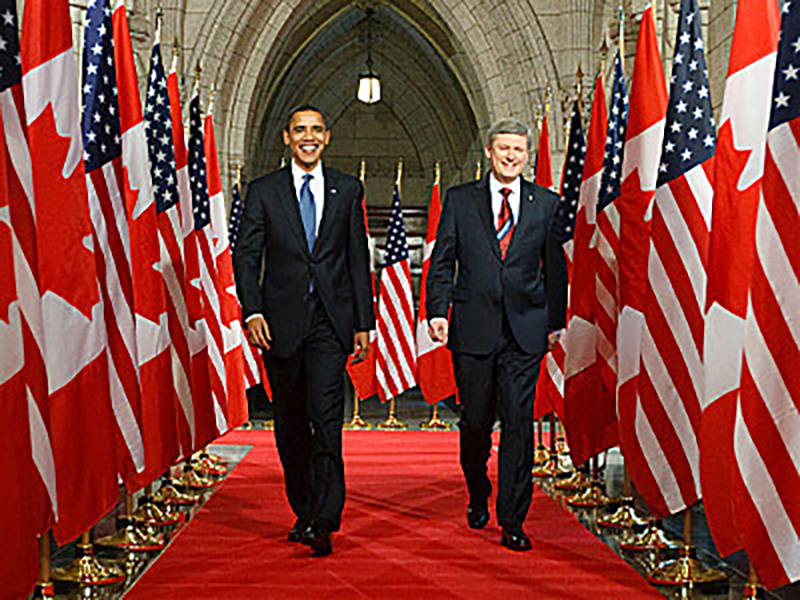
As commander-in-chief, Obama has not been a president looking to lead his country into wars. In October 2002, when he was a state senator in Illinois, Obama told an anti-war rally in Chicago that a post-9/11 U.S. invasion of Iraq, threatened at the time by the Republican administration of President George Bush, would be “dumb” and “rash”. That position aligned him with the Canadian government of then-Liberal prime minister Jean Chretien, who refused to join the U.S. invasion of Iraq when it was launched in March 2003, saying there was no justification under international law for such an invasion.
Just as Trudeau opposed U.S. involvement in the Vietnam War in the 1960s and 70s, Obama was consistent in his opposition to the U.S. invasion of Iraq in 2003. In fact, he was the only presidential candidate from either party in the 2008 election who opposed the war from the beginning. As of December 31, 2011 Obama had withdrawn the last U.S. troops from Iraq after almost nine years of combat and the deaths of nearly 4500 of them.
Multilateral approach to foreign policyObama’s Republican and media critics have criticized him for what they characterize as “leading from behind” in foreign policy, taking a multilateral approach for such initiatives as the NATO air campaign against Libya and the West’s boycott of Iran over its nuclear weapons ambition. But non-intervention militarily has always been the norm of Canadian foreign policy, resorting to force only on a multilateral basis with Commonwealth or NATO allies, or as part of a United Nations mandate.
Quickly on in his second term, Obama showed, once again, that he was not prepared to commit the U.S. to unilateral military initiatives without the support of his NATO allies or Congress. The president displayed indecisive leadership when he reversed himself after immediately threatening to launch a missile attack on the Syrian regime of Bashar al-Assad in retaliation for the deaths of 1,400 Syrian civilians killed in an August 21, 2013 chemical attack for which Obama held al-Assad responsible despite denials from the Syrian president.
It didn’t take long for Obama to cancel plans for an immediate military reprisal when he discovered that NATO allies, starting with Great Britain, would not join in the attack. Russian President Vladimir Putin outmaneuvered Obama on the diplomatic front by brokering a deal whereby the Syrian regime would voluntarily give up its chemical weapons, to be destroyed under international supervision, which perhaps saved Obama from the embarrassing possibility of having his own Congress deny him support for a military strike on Syria.
Once again, his critics accused Obama of leading from behind, and public opinion polls seemed to agree. An online poll of 1,000 Americans conducted from September 21-23, 2013 by the Economist and YouGov showed that only 25 percent of them picked Obama as the most effective world leader during the Syrian chemical weapons crisis, compared with 49 percent of Americans who named Vladimir Putin. In a separate question, 44 percent of Americans cited Obama as the least effective leader, dead last among world leaders including al-Assad.
So it is in the area dealing with the use of military force as a tool of foreign policy that we find our first commonality between Obama and Canadian leaders such as Trudeau, who was prime minister from April 20, 1968 to June 3, 1979 and from March 3,1980 to June 30, 1984. In the tradition of Canadian primes ministers throughout history, Trudeau was not a leader prone to getting Canada involved in military initiatives.
Trudeau, who died of cancer on September 28, 2000, less than one month short of his 81st birthday, would have found a kindred soul in Obama had the two men met. In fact, from an intellectual and social point of view, Trudeau could have been the mentor of the future U.S. president, 42 years his junior. Obama was one month short of his 7th birthday when Trudeau was first elected prime minister in July 1968.
So what else could two such leaders born two generations apart have in common? Let us start the analysis with the obvious charisma, glamour and intellect which allowed both of these political outsiders to win the nominations of their respective parties and to sweep the electorate off their feet in their first national campaigns — Trudeau in 1968 and Obama in 2008.
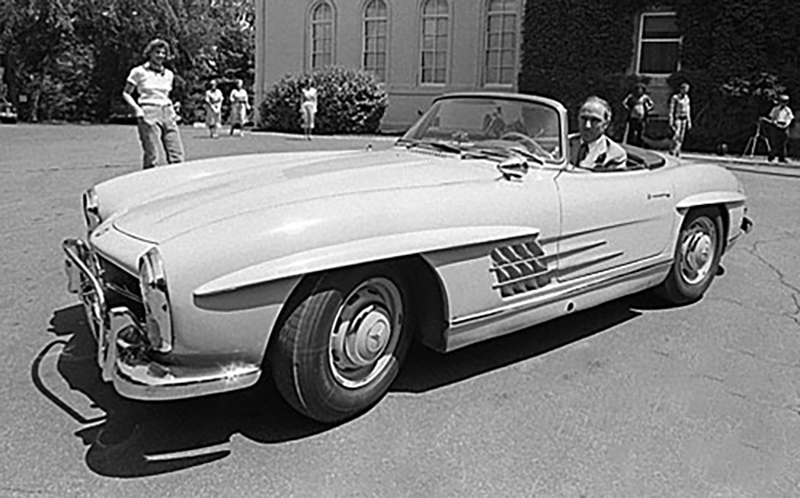
During the 1968 Canadian election campaign, women of all ages swooned at the sight of a lean, athletic, single Trudeau, 48, performing handstands and back flips into swimming pools for the benefit of the television cameras. The fact that he was independently wealthy, dapper and drove a limited edition 300SL Mercedes convertible roadster only added to the mystique. It was a phenomenon known as “Trudeaumania”. And it wasn’t confined to Canada. Dr. Joyce Brothers, the American psychologist and advice columnist, used the Spanish word “machismo” to describe his appeal at the time.
She wrote of the politician with the ubiquitous rose in his lapel: “Perhaps the chief reason the girls go for Trudeau is that he has whisked away the stale aroma of cigar smoke that has surrounded politics for too many decades and instead has perfumed the air with glamour.”
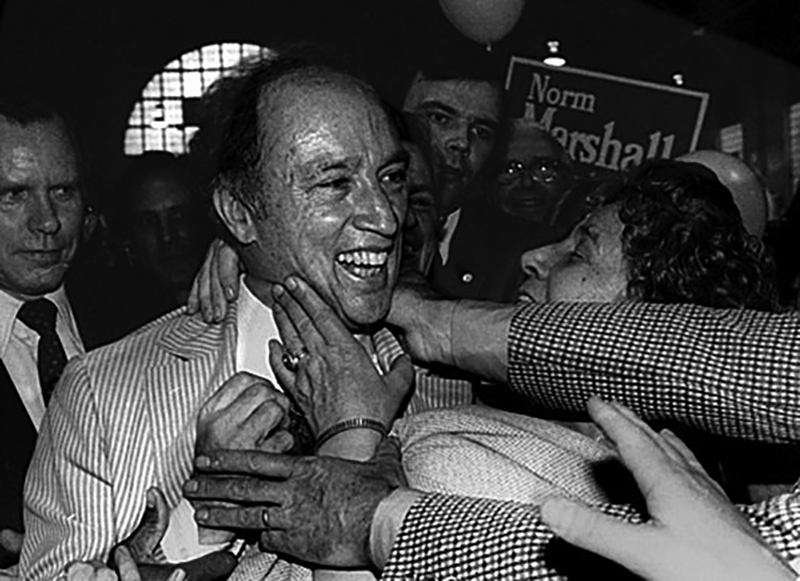
After he became prime minister, Trudeau dated high-profile women in the entertainment field such as Barbara Streisand, Gale Zoë Garnett, Margot Kidder, classical guitarist Liona Boyd and Kim Cattrall. The latter three were Canadian by birth. Garnett, a singer best known for the pop hit, We’ll Sing in the Sunshine, was born in New Zealand in 1942, but moved to Canada with her family at age 11. Between 1971 and 1984, when they divorced, Trudeau was married to Margaret Sinclair, a stunning beauty 30 years his junior, with whom he had three boys, including his eldest, Justin, who since 2008 has held a seat in the House of Commons as Liberal member for the Montreal riding of Papineau.
Although not single, Obama has been known to garner airtime on national newscasts strolling the beaches of Hawaii in a bathing suit, showcasing his washboard abs. Like Trudeau, he has always made time for daily physical recreation — in Obama’s case treadmill, weights and pickup games of basketball; for Trudeau a brown belt in judo, swimming, skin diving, skiing, hiking, and camping.
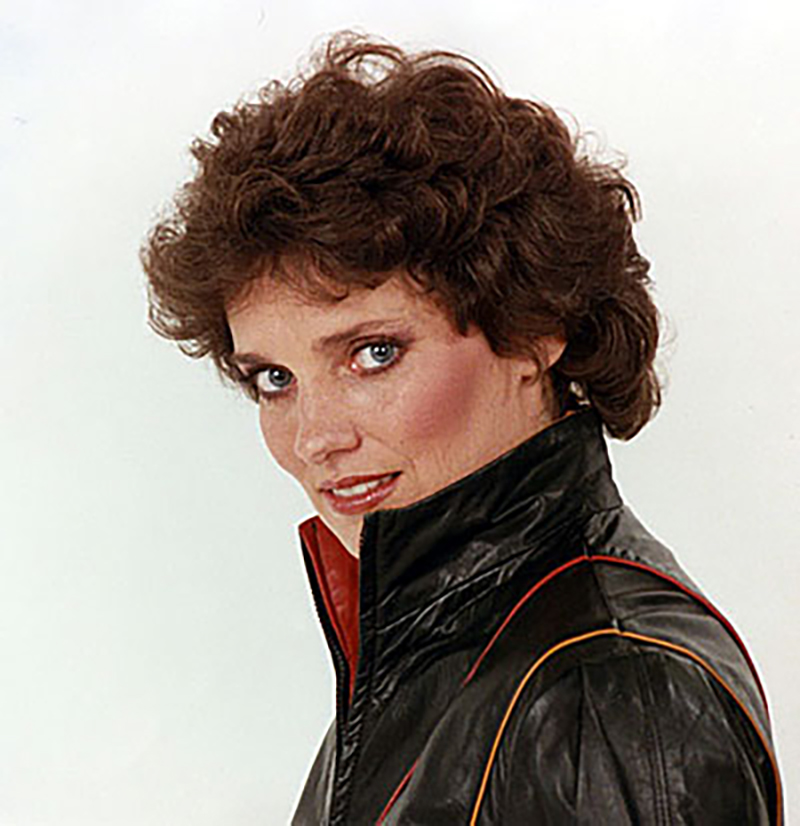
Canadian-born actress Wendy Crewson, who has played the love interest of U.S. presidents on two American-made television series and a movie, was asked tongue-in-cheek on February 16, 2012 by late night CBC talk show host George Stroumboulopoulos whether former president Bill Clinton ever phoned her to join him at the White House for a “makeout” session.
“No,” a smiling Crewson answered without missing a beat, “but if Barack did, I would be there.”
However, it is more than their physical vitality which ignited voters in favour of Trudeau and Obama. During his 2008 campaign for the White House, the then-47-year-old Obama thrilled his audiences with a promise of “hope” encompassed in the campaign slogan, “Change we can believe in.” He said: “Change will not come if we wait for some other person or some other time. We are the ones we’ve been waiting for. We are the change that we seek.”
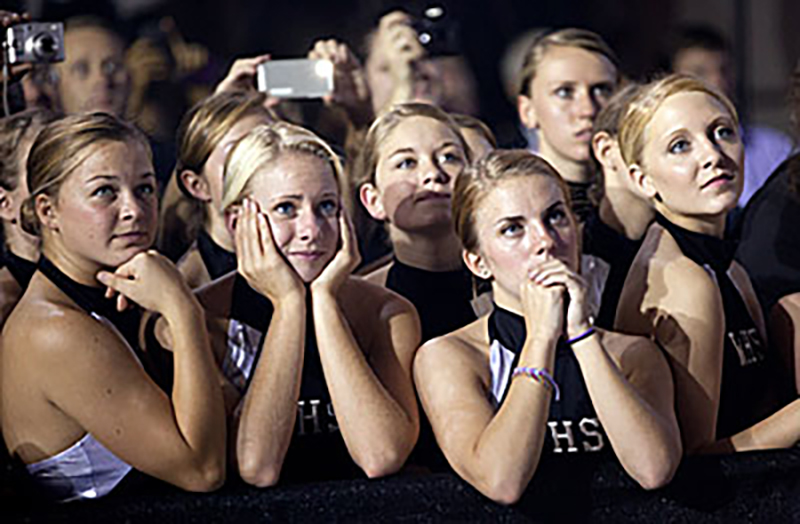
The theme of change was enunciated by Trudeau on the night of April 4, 1968, just two days before he won the Liberal Party leadership convention and less then three months before he won the federal election making him Canada’s prime minister at age 49. On that Thursday night of April 4th, just hours after the world had learned of the assassination of Dr. Martin Luther King Jr. in Memphis, Trudeau gave an impromptu speech before 300 young delegates to the Liberal leadership convention: “Yes, we will. We’ll change this country….it’s a genuine interest in the Just Society we want to have in Canada.”
Political outsiders with strong mothersBoth Trudeau and Obama were political outsiders propelled by their parties through television exposure to leadership positions in election years four decades apart — 1968 and 2008 — when voters were looking for fresh faces. Obama also made deft use of the Internet to solicit voter support.
Although they came from different social strata, both adopted strong views at a young age in favour of the disadvantaged. Both men were influenced through their close relationships with their strong-willed mothers, who had highly defined senses of social justice.
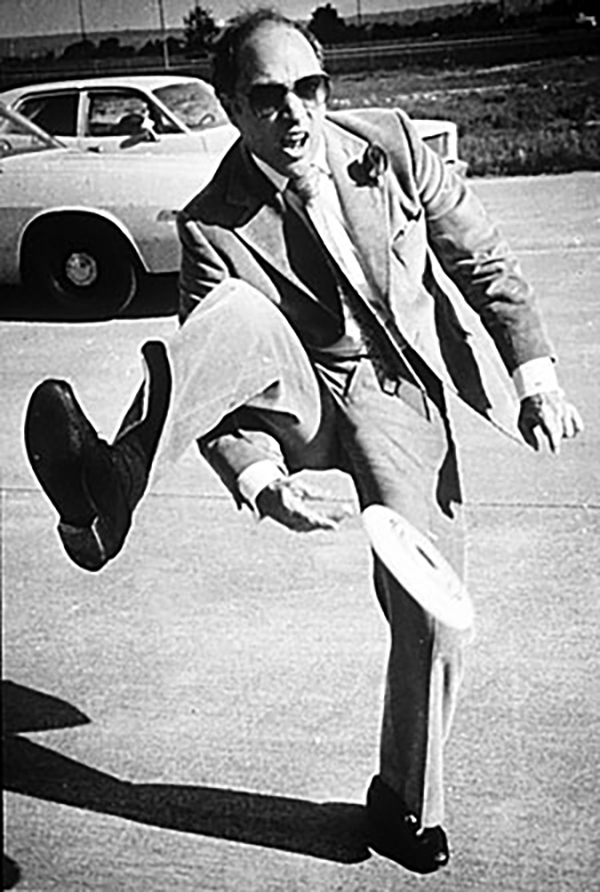
Trudeau, the second of three children and the eldest son, was born into a privileged Montreal family whose patriarch, Charles, was a wealthy French-Canadian lawyer and businessman who became a millionaire during the Great Depression when he sold a string of 30 service stations to Imperial Oil for $1.3 million in 1932. He invested his money in the stock market, including Hollinger mines, Algoma steel smelters and even a landmark recreation site known as Belmont Park, which operated in the Cartierville district of Montreal between 1923 and 1983. An inveterate poker player and bon vivant, Charles was also an outdoorsman who loved hunting and fishing, neither of which became passions for his son, the future prime minister.
The elder Trudeau also loved spectator sports, investing in boxing and the semi-pro baseball team, The Montreal Royals, a Triple A International League affiliate of the then-Brooklyn Dodgers, where the great Jackie Robinson would break the color barrier of professional baseball in the 1946 season before moving up to the National League’s Dodgers. Every year, Charles would accompany his Royals to spring training in Florida, but in 1935 he caught a pneumonia while there and died. Pierre was 15 at the time.
In later years, Trudeau recalled of his father: “He was a man I admired very much in everything because, at least in the eyes of the world I lived in, he was a successful man. He had a lot of friends. The house was always full of friends.”
His father’s death brought him even closer to his mother, Grace Elliott, who was of Scottish heritage mixed with French. His mother was a confidante and supporter of Thérèse Casgrain, a feminist reformer who led the women’s suffrage movement prior to the First World War which resulted in Quebec women being granted the right to vote in 1940. Trudeau never permanently left the family home until his mid-40s when he moved to Ottawa to follow a political career. His mother died in 1973.
Obama, born in Hawaii on August 4, 1961, came from a middle-class family. His black father, Barack Hussein Obama Sr., born in Kenya when it was a British colony, deserted the family in Hawaii 16 months into the marriage to take a scholarship to study economics at Harvard University. It later turned out that he already had a family in Kenya. A divorce followed in 1964. Harvard revoked his scholarship when his womanizing ways became public and he returned to Kenya without obtaining his Ph.D.
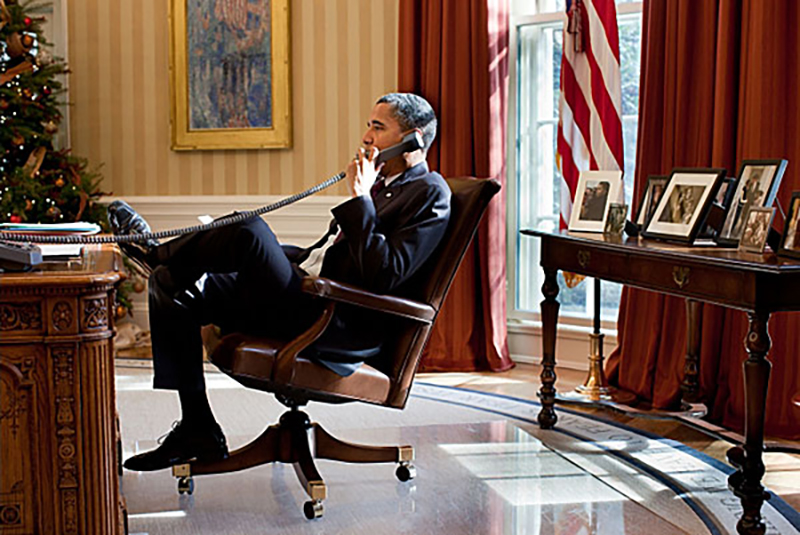
A bright, charismatic and opinionated man, Obama Sr. was also a drunkard with anger management issues. Raised as a Muslim, he evolved into an atheist as an adult and was obsessed with politics and international freedom movements, including anti-colonial independence initiatives in Africa and civil rights in the U.S. He died in a car accident in 1982, having seen his son, the future president, only once after he deserted the family —a short trip lasting a few days in 1971 when Obama Sr. visited Honolulu.
Obama’s white mother, Ann Dunham, was an American anthropologist from Kansas, who specialized in economic issues and helped develop microcredit programs to battle poverty in the rural villages of Indonesia. In a March 27, 2007 interview published in The Chicago Tribune, Obama is quoted as saying that his mother was “the dominant figure in my formative years.” He went on to say: “The values she taught me continue to be my touchstone when it comes to how I go about the world of politics.”
After his mother divorced Barack Obama Sr. in 1964, she remarried Indonesian geographer Lolo Soetoro, whose father and eldest brother were killed during the Indonesian War of Independence, a bloody armed struggle which lasted four years and ended with Indonesia winning independence from the Dutch Republic in 1949. They had a daughter together, Maya Soetoro-Ng — Obama’s younger half-sister who has spent time in Burlington, Ontario with her Canadian husband, Konrad Ng.
In his 1995 book of memoirs, Dreams From My Father, Obama described his stepfather, a Muslim, as “a good man” who gave him some boxing lessons and taught him that the strong — be it men or countries — take advantage of the weak. “Which would you rather be?” Obama quotes his stepfather as asking. Dunham and Soetoro divorced in November 1980, and he died of liver failure in March 1987.
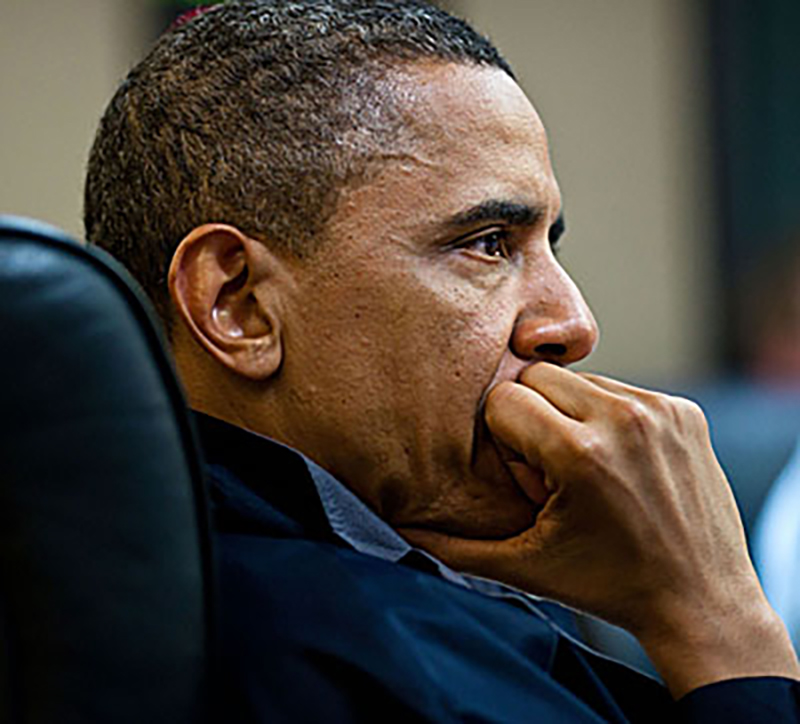
Unlike Trudeau, who even as a scrawny adolescent was an intellectual contrarian who would let his fists fly if challenged physically, Obama was a sensitive, intellectual child devoid of physical aggression. Despite his stepfather’s efforts to toughen him up, there were sceptics in the Democratic establishment in 2008 who thought that “Obambi”, as some called him, might be too cerebral and soft for the presidency.
But they underestimated the tough hide he had developed as a youngster who grew up knowing that his biological father had rejected both him and his mother. He also had to learn to cope with his biracial DNA and his multiracial environment, growing up in both Indonesia and later, after his mother and stepfather divorced, in Hawaii where he spent a lot of time with his maternal grandfather and grandmother.
Health care as a priorityDunham died in November 1995 of ovarian cancer which began in her uterus. In a speech in Santa Barbara, California as reported in the Chicago Tribune of September 21, 2007, Obama, then a U.S. senator, said that during the last days of his mother’s life she was preoccupied with worries as to whether her insurance would cover her cancer treatments or whether the insurance company would refuse coverage, claiming it was a pre-existing condition.
“I remember just being heartbroken, seeing her struggle through the paperwork and the medical bills and the insurance forms,” Obama said. “So, I have seen what it’s like when somebody you love is suffering because of a broken health care system. And it’s wrong. It’s not who we are as a people.”
So in March 2010, Obama as president signed into law the Patient Protection and Affordable Care Act, referred to by some as “ObamaCare”. Parts of the law are already in force, such as compelling insurance companies to insure children with pre-existing medical conditions. But most of the legislation was to come into effect as of January 1, 2014, expanding Medicaid eligibility and setting up state-regulated, standardized health insurance exchanges to make federally subsidized private health insurance mandatory for an estimated 47 million to 53 million Americans who cannot afford current health insurance premiums. It would also make it illegal for insurance companies to stop coverage for sick people or to deny coverage to adults based on pre-existing conditions.
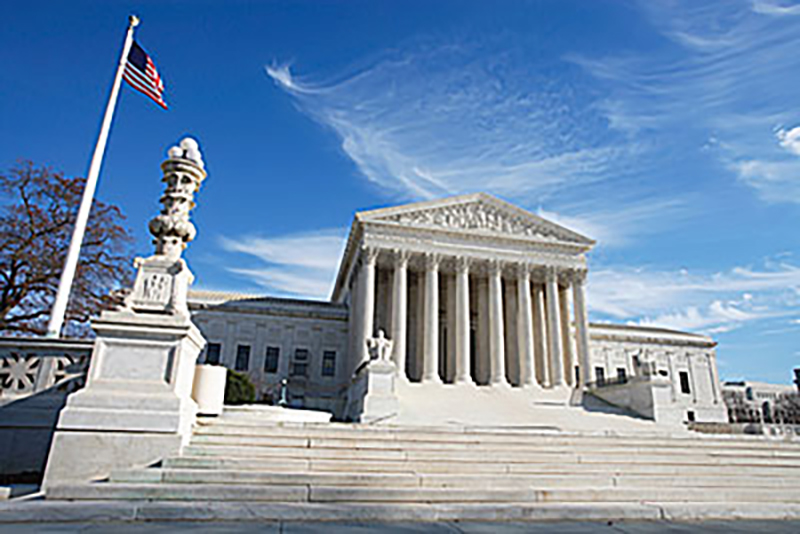
The U.S. Supreme Court heard arguments on the constitutionality of the legislation on March 26, 27 and 28, 2012 as a result of a challenge from Republican officials in 26 states who, among other issues, claimed that the legislation’s “individual mandate” was unconstitutional because it would coerce private citizens to buy health insurance or face financial penalties.
The question in the minds of legal observers was whether if the Supreme Court struck down the “individual mandate”, it would result in voiding the entire law, which is 2,700 pages long, on the premise that nothing in the law could stand if the “individual mandate” portion was ruled unconstitutional. Such a complete legal reversal would have been a devastating blow to Obama and his prospects for re-election on November 6, 2012.
High Court upholds ObamaCareWhen the U.S. Supreme Court announced its decision on June 28, 2012, it was a 5-4 ruling in favor of the Patient Protection and Affordable Care Act, with Chief Justice John G. Roberts Jr. casting the deciding vote and writing the majority opinion.
Although the court upheld the legislation, it did not do so based on the Obama administration’s legal argument that it had the power under the commerce clause of the Constitution to enforce an “individual mandate”, requiring uninsured Americans to buy health care insurance. Instead, Chief Justice Roberts said that the legal basis for upholding the law was the power under the Constitution for Congress to impose taxes, which is what the legislation calls for as a penalty on any Americans who refuse to buy health care insurance.
Obama himself has refused to call it a “tax”, preferring to use the less politically-charged descriptive “penalty”. However, in his ruling, Roberts said it is clearly a “tax” and was the basis on which he could justify support for the “individual mandate” and not strike down the law. The majority opinion, written by Roberts, concluded that although the federal government does not have the power under the commerce clause to force Americans to buy health care insurance, it does have the power to tax them if they refuse to buy such insurance, which de facto means Americans are obligated to buy such insurance unless they want to be penalized when they file their annual tax returns.
In voting to allow the law to stand, Roberts joined justices Ruth Bader Ginsburg, Sonia Sotomayor, Stephen Breyer and Elena Kagan.
Opposing the law were justices Clarence Thomas, Antonin Scalia, Samuel Alito and Anthony Kennedy, who argued that the tax was not intended as a revenue-raiser, but rather as a penalty as stated by Obama himself. Therefore, the tax issue could not be the basis for allowing the law to stand, they wrote.
However, Roberts said that “labels” don’t matter and whether you called it a “penalty” or a “tax”, the monies required to be paid by Americans refusing to buy health care insurance would still raise tax revenues collected through the Internal Revenue Service.
Roberts went on to write that in his opinion, not necessarily in the opinion of the court’s majority, he thought the law could not be justified by the commerce clause, as argued by the Obama administration, because rather than regulating existing economic activity, it compelled citizens to enter into new activity.
In his decision, Roberts wrote: “We do not consider whether the [health-care act] embodies sound policies. That judgment is entrusted to the nation’s leaders. We ask only whether Congress has the power under the Constitution to enact the challenged provisions.”
Obama, who gained a huge boost in his bid for re-election as a result of the ruling, had this to say: “I know there will be a lot of discussion today about the politics of all this — about who won and who lost. That’s how these things tend to be viewed here in Washington. But that discussion completely misses the point. Whatever the politics, today’s decision was a victory for people all over this country whose lives will be more secure because of this law and the Supreme Court’s decision to uphold it.”
Forty two years earlier, Trudeau was equally committed to seeing a system of universal health care, known as “Medicare”, implemented across Canada, as scheduled, on July 1, 1968, under legislation passed in 1966 by the government of his Liberal predecessor, Prime Minister Lester Pearson. It allows Canadian citizens in all provinces and territories to receive hospital medical services, paid for by the government.
It was just days before the April 6, 1968 Liberal leadership convention to choose a successor to Pearson when Mitchell Sharp, who was the respected finance minister in the Pearson government and had been a candidate to replace him as party leader, said he thought the Medicare plan should not be implemented as scheduled on July 1. Instead, he suggested that the plan, which would be expensive for taxpayers, should be reviewed. Trudeau disagreed, saying that Medicare was the law of the land and would go into force, as scheduled, if he was chosen party leader. He was, and it — Medicare — did go into effect across Canada on July 1, 1968.
Separation of church and stateStrong Christian convictions is another point in common between Trudeau and Obama, although Trudeau was a lifelong observant Catholic, whereas Obama only renewed his commitment to Christ after he reached adulthood and was baptized at age 27 in the Trinity United Church of Christ, a black liberation church.
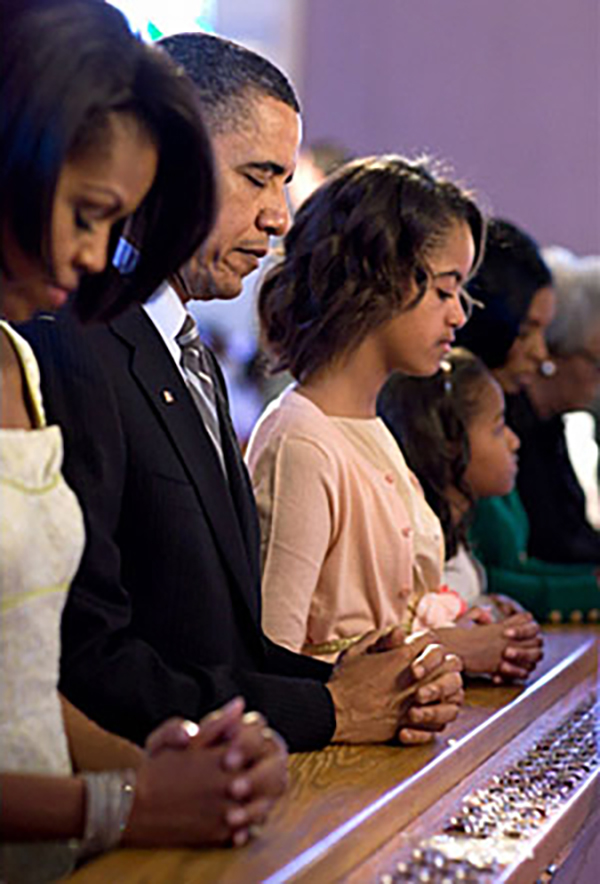
Trudeau, equally fluent in French and English, attended high school at the exclusive College Brébeuf, in the fashionable, tree-lined suburb of Outremont, where he was taught by the Jesuits. He was driven to school by a chauffeur and ran with a crowd known as Les Sobs.
Trudeau acknowledged prior to becoming prime minister in 1968 that he was not personally aware of the poverty of the Great Depression at the time he was growing up because all his schoolmates came from privileged families. On the other hand, he recalled that his parents were strict about making sure that he did not walk around with money as a teenager in order to sensitize him about the difficulties of many suffering through the throes of the Great Depression. “I remember as a boy,” he said in a pre-1968 interview, “most of my friends had chocolate and candy on holidays, but I never had a cent.” Acquaintances said that as an adult he continued this absent-minded tradition of walking around without money in his pockets, which meant that friends usually picked up their group’s bar and restaurant tabs. He seemed uninterested in materialism, other than sports cars, which were a passion.
As part of his education, he learned to read music, which led to a lifelong love for concerts and opera. He adopted the motto “reason over passion”, which was a natural outgrowth of admiration in his university years for French philosopher and lecturer Jacques Maritain (1882-1973), whose own beliefs were ascribed, in part, to St. Thomas Aquinas’ writings about an ordered system reconciling faith and reason.
Unlike Trudeau, Obama, a Protestant, did not grow up in the lap of luxury. He attended both Catholic and secular schools in Indonesia and Hawaii, respectively. In a December 23, 2011 interview with Barbara Walters on ABC’s 20/20, Obama said he regretted not having learned a musical instrument and not speaking fluent Spanish.
Both Obama and Trudeau have been described as aloof, but those acquainted with them have called it a form of reserve, perhaps in Trudeau’s case stemming from some shyness dating back to his youth. Obama’s cool demeanor appears to be more of an introvert’s love of solitude going back to his time as an academic. During the 2008 presidential election, he was known as “No Drama Obama”. In their private lives, both leaders were said to be sentimental.
As an adult, Trudeau clad in jeans and sandals, regularly attended Sunday communion at the gothic stone church on St. Germaine Avenue near his family’s Outremont home, roaring up to curbside on his 1200 cc Harley-Davidson motorcycle, weather permitting. Obama and his family regularly attend Sunday church services in Washington, D.C.
Although they had values based on religious teachings, both Trudeau and Obama — in the tradition of John Kennedy, elected as the first Catholic U.S. president in 1960 — believed that there should be a division between church and state when it comes to public policies. However, Obama’s handlers in the 2008 campaign felt obliged to put the lie to rumours that Obama was a Muslim, so they issued campaign material that said Obama would be a president “guided by his Christian faith.” They quoted him as saying, “I believe in the power of prayer.”
In the matter of separation of church and state, both Trudeau’s and Obama’s views would seem to be supported by Pope Benedict XVI who said in a September 2008 speech before 8,000 people in the Vatican’s audience hall, as reported in AsiaNews.it, that France was an excellent example of a society with a “healthy distinction” between its political and religious spheres. However, he said, “a true separation between church and state does not leave out the spiritual dimension, but acknowledges that the latter is, in a radical way, a guarantee of our freedom and autonomy in earthly matters” since Jesus said “render unto Caesar the things which are Caesar’s….”
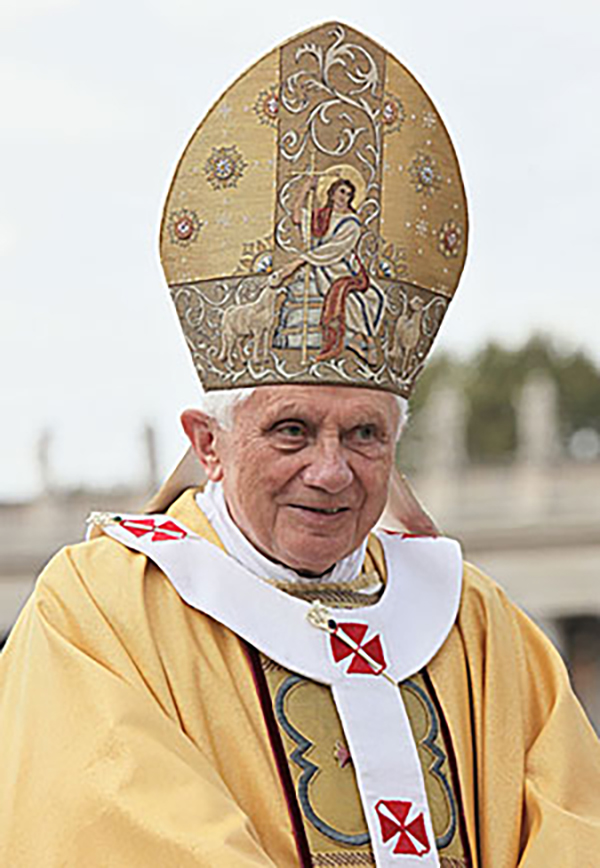
More than half a century before the pontiff declared himself on this issue, Trudeau, writing in Cité Libre, a French-language intellectual journal he helped found in 1950, attacked the Catholic Church for dominating Quebec’s education system and using it to encourage nationalist elements and for inciting xenophobia in Quebec society.
In 1948, Trudeau embarked by himself on a world tour which lasted 18 months and cost him $800, writing occasional pieces for the French-language Montreal daily Le Devoir, with its penchant for long-form intellectual journalism.
In shorts and with a beard, he hitchhiked, walked, hopped trains and took an occasional plane through Europe, Asia and the Middle East, seeking out journalists, teachers and politically involved individuals in all the countries he visited. He made notes on the various ideologies he encountered at a time when communism was being imposed by the Soviet Union on its satellite states in eastern Europe, and the Red Chinese forces of Mao Tse-Tung were in the process of winning the civil war in mainland China against the Western-backed forces of Chiang Kai-Shek.
Trudeau, 29 at the time and a graduate student at the London School of Economics, concluded that nationalism, which had led to the Nazi takeover of Germany in the 1930s, was a danger to individual liberties wherever it took hold. In Trudeau’s later political career, pundits would question why, if he opposed nationalism, he had not enlisted in the Canadian armed forces to fight against Nazism in the Second World War.
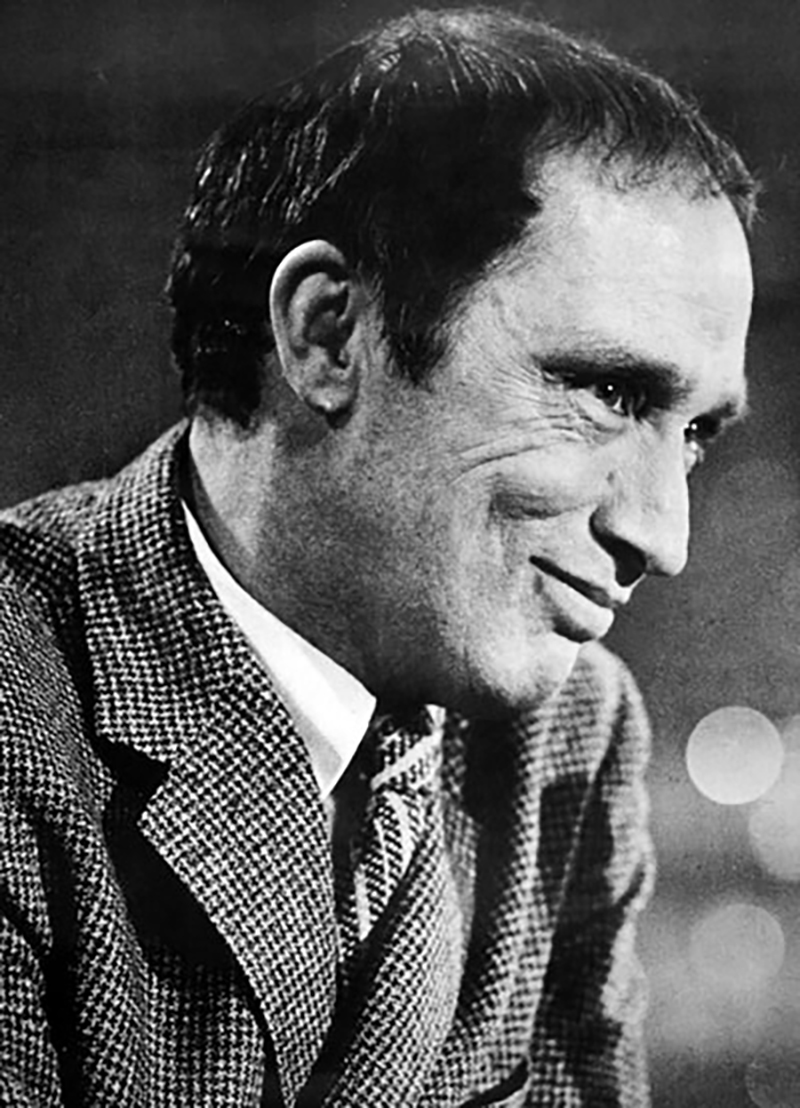
In his 1993 book, Memoirs, Trudeau said he was opposed to the federal Liberal government of Mackenzie King imposing conscription in 1944 (a year before the war ended) after pledging in 1940 to limit Canada’s direct involvement in the war. In a 1942 plebiscite, English Canadians voted 83 percent in favour of conscription to help Britain in its battle against the Axis powers. But French-Canadians voted 72.9 percent against conscription to help Britain.
(One should understand that many French-Canadians saw Britain as the conqueror of New France at the Battle of the Plains of Abraham in 1759, which led to France at that time ceding all its possessions in North America to Britain, which, in turn, imposed higher taxes on its 13 American colonies to pay for the debt it had incurred in its war with France. The cry went out among the American colonies for “no taxation without representation”, leading up to the Boston Tea Party in 1773, the American Revolution in 1775 and the Declaration of Independence on July 4, 1776. Thereafter, there was a state of tension between the newly independent United States of America and the British colonies north of the 49th parallel, which would eventually be known as Canada. This year marks the centennial of the last armed conflict between the U.S. and Canada — The War of 1812, which ended with the Treaty of Ghent in December 1814 with neither side having made territorial gains, although expansion was not the main objective of the war for either.)
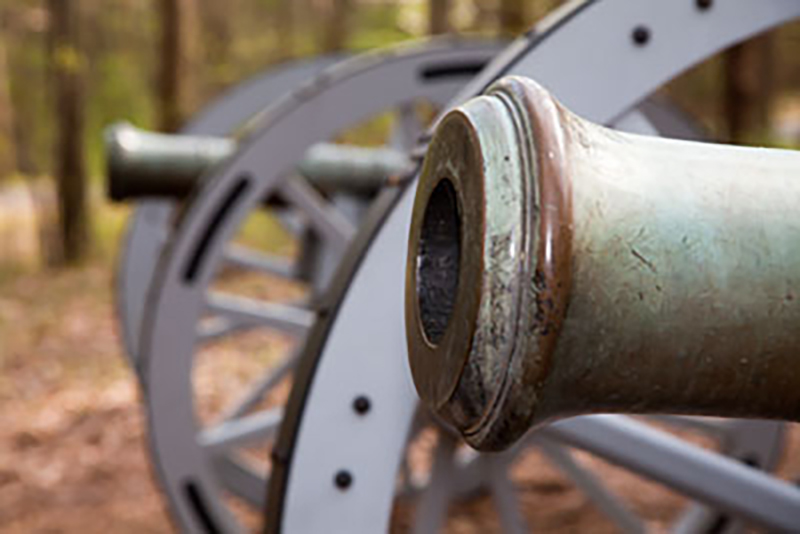
At a Toronto press conference during his 1968 Liberal leadership campaign, Trudeau alluded to his French roots and training by the Jesuits in trying to explain the influences which had led to his reluctance to fight in the Second World War: “Like most Quebecers, I had been taught to keep away from imperialistic wars….The error was on the part of the politicians who promised in the 1930s there would be no conscription and if there was, it would be over their dead bodies.”
In his 1993 book, Memoirs, Trudeau wrote that he would have been willing to fight the Nazis but he felt that it would have meant being disloyal to French Canada which had been misled by the then-prime minister King on the issue of conscription. “So there was a war?” Trudeau wrote. “Tough…if you were a French Canadian in Montreal in the early 1940s, you did not automatically believe that this was a just war…we tended to think of this war as a settling of scores among the superpowers.” Instead, Trudeau joined the Canadian Officers’ Training Corps, serving in Canada for a short time until he was kicked out for what he called at the time a “lack of discipline”. He later joined Les Fusiliers de Montréal, the reserve battalion of an active unit which had fought at Dieppe, France. Trudeau was given a commission as a lieutenant, a rank he held until his retirement in 1947. During his time in the reserve, he trained two nights a week at the armory in Montreal and three weeks at a military camp in the summer.
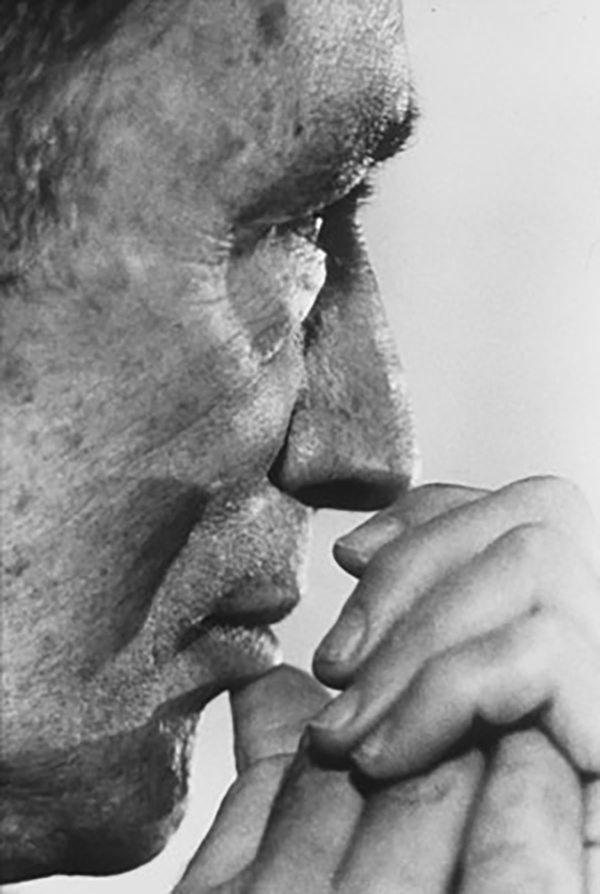
During his 1948-49 travels, Trudeau also began to question the role of religion in trying to control the free will of people. He found himself attracted to the Eastern religions with their emphasis on love, rather than obligation. He said at the time: “…The command aspect, the account aspect of religion which is sometimes tied to our Western conception of religion, I don’t think is one that is necessarily part of Christianity. I don’t like religions that make people do things because the commandments say to do them. I would like religion to be the inner thing which commands you.”
During his travels to the Indian subcontinent, Trudeau adopted the Hindu mannerism of greeting by placing the tips of his fingers together and inclining his head with a slight bow, which he used frequently throughout his political career. In yogic meditation, the touching of the fingertips pointing upwards is thought to help create a closed circuit of vital energy, known in Hindu philosophy as “prana”, flowing between the head and heart to induce meditative serenity.
In addition to his somewhat exotic mannerisms, Trudeau also differed from Obama in his style of public oration. Obama usually speaks as though he is on a church pulpit, employing the tone and cadence of a preacher, replete with repetition of thematic phrases. Trudeau, on the other hand, spoke in a more contemporary fashion, devoid of most rhetorical devices, his speeches often accentuated with Gallic shrugs and hand gestures.
The promise of multiculturalismIn 1949, after his trip, Trudeau said: “I am against any policy which is based on race or religion. Any such policy is reactionary policy, and for the past 150 years, nationalism has been a retrograde idea. By an historic accident, Canada has found itself approximately 75 years ahead of the rest of the world in the formation of a multinational state, and I happen to believe that the hope of mankind lies in multinationalism.”
Of course, Obama, who described his extended family as “a little mini-United Nations” during an October 2006 interview on the Oprah Winfrey Show, would agree with Trudeau’s — and Canada’s — emphasis on multinationalism. He went on to tell Winfrey: “I’ve got relatives who look like Bernie Mac, and I’ve got relatives who look like Margaret Thatcher.”
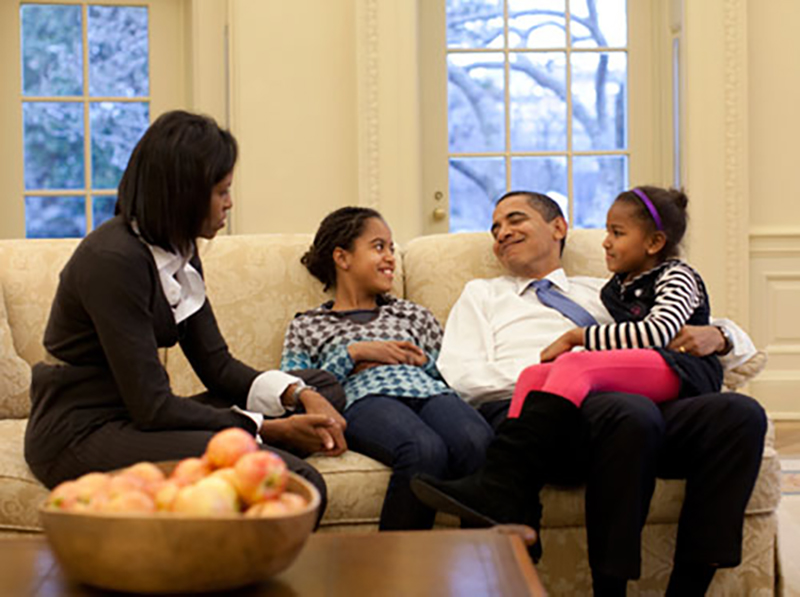
In an interview published February 8, 2007 in the Honolulu Star-Bulletin, Obama said of his years living in Hawaii and dealing with his multiracial heritage: “The opportunity that Hawaii offered — to experience a variety of cultures in a climate of mutual respect — became an integral part of my world view and a basis for the values that I hold most dear.”
Trudeau, who in the 1950s supported the left-wing Canadian Commonwealth Federation, forerunner to the New Democratic Party, performed pro-bono legal work for Quebec’s unions after visiting miners on the picket line in the bitter 1949 strike at the American-owned Canadian Johns-Manville Company Ltd. in the town of Asbestos, Quebec. The miners, who had to contend with scabs and bloody attacks by aggressive provincial police officers, nicknamed Trudeau “Saint Joseph” in recognition of his support and his ethereal look, accentuated by a scraggly beard and sandals.
Like Obama at the University of Chicago, Trudeau was a constitutional law professor at the Université de Montréal before he went into politics. And as Trudeau donated his time in the 1950s helping unions prepare legal briefs opposing anti-union legislation and in favour of constitutional reform, Obama donated his time to organize a voter registration drive in 1992 with hundreds of volunteers to help 150,000 African-Americans in the state of Illinois become eligible to vote. For three years before he entered Harvard Law School, 1985-1988, he worked as a community organizer in Chicago, setting up job training, tutoring and tenants’ rights programs.
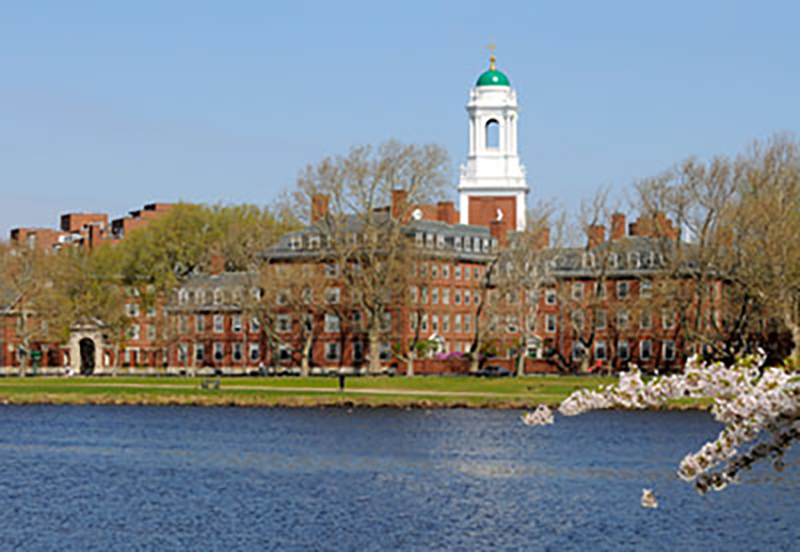
Both men were well educated, but the wealthy Trudeau was more of an intellectual dilettante, thanks to his wide exposure through travel and formal education at the best schools in the world to philosophies and theories ranging from the antiquarian era to the Enlightenment to the Industrial Age and beyond. Obama graduated from Columbia University and Harvard Law School. Trudeau studied at the Université de Montréal, Harvard University, the Sorbonne and the London School of Economics, where he became a disciple of economist Harold Laski, a British Marxist and former chairman of the Labour Party in that country.
Trudeau loved reading about philosophy and concepts of justice. He was heavily influenced by the empiricist philosophers John Locke of England and David Hume of Scotland, as well as by French philosophers Jacques Maritain and Emmanuel Mounier. It was Locke (1632-1704) who wrote that governance rests on popular consent and that rebellion is acceptable if a government subverts the ends for which it was created — namely the protection of life, liberty and property. About a century later, these principles became the basis of the American Declaration of Independence.
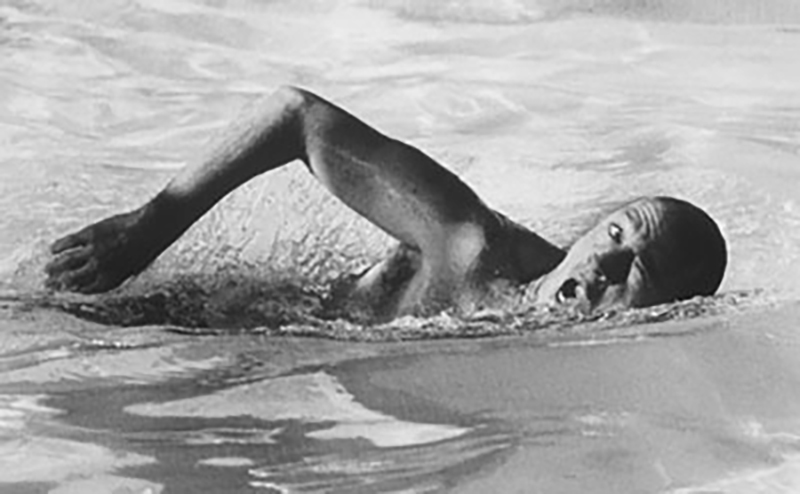
Prior to becoming prime minister in 1968, Trudeau said he was glad that he had studied law. “I have always loved justice,” he said. “I have always loved a sense of balance. I wanted to know my rights in order to push them to the limit. I didn’t like authority. Consequently, I liked to be able to contradict people who said I didn’t have the right to do such and such a thing.”
Trudeau’s socialist views led U.S. authorities to ban him from entering the U.S. for a few years after he attended, upon invitation, an international economic conference in Moscow in 1952. The McCarthyism witch hunt was in full force at the time with Senate hearings under Republican Senator Joseph McCarthy of Wisconsin seeking to ferret out Soviet spys and sympathizers engaged in what they claimed was espionage against U.S. interests.
Trudeau later said that he got his name removed from the “black list” by explaining to the U.S. consul in Montreal that the economic conference in Moscow had included many other legitimate economists and businessmen. Perhaps the U.S. Consul-General also learned that the irreverent Trudeau had thrown snowballs at Lenin’s statue while in Moscow, leading to a rebuke from Soviet authorities.
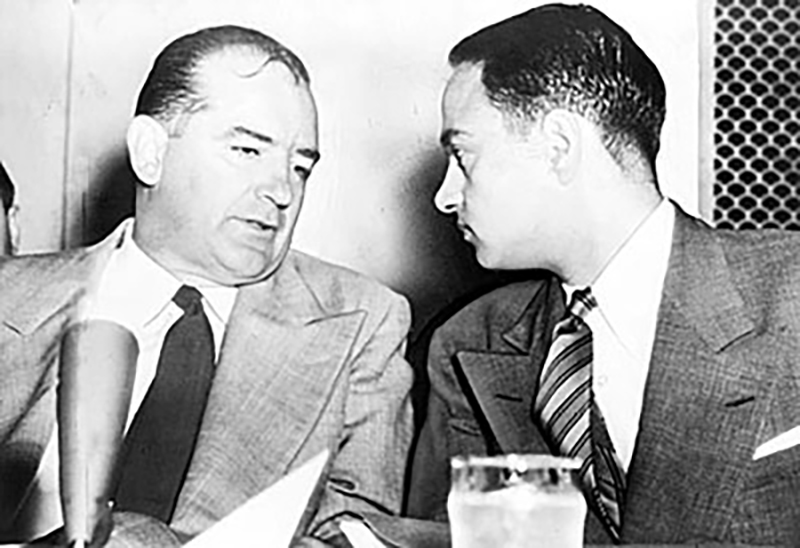
Trudeau acknowledged that he had socialist leanings at an early age, but said he moderated them as he became more savvy as to the political realities of Canada. The roots of his socialism began, he said, as “a feeling of repugnance towards the fact that I had been more favoured in life than some of my friends and that I had been able to complete studies without hardship.”
Trudeau A Man For Tomorrow [© 1968, Clark, Irwin & Co. Ltd.] written by Toronto Telegram journalist Douglas Stuebing with collaboration from colleagues John Marshall and Gary Oakes, further quotes Trudeau as saying:
In looking for those remedies to social injustice, I found them first of all in the study of socialist thought. It is true that at a certain period, I read a lot of left-wing authors; I felt they had the remedy to these ills and it was true. But I became aware later that the systems that these people elaborated, whether they be called socialism or something else, were designed for a certain country or a certain period, and that we would be wrong to apply them to another country and another period. So I allowed myself to be guided more by pragmatism.
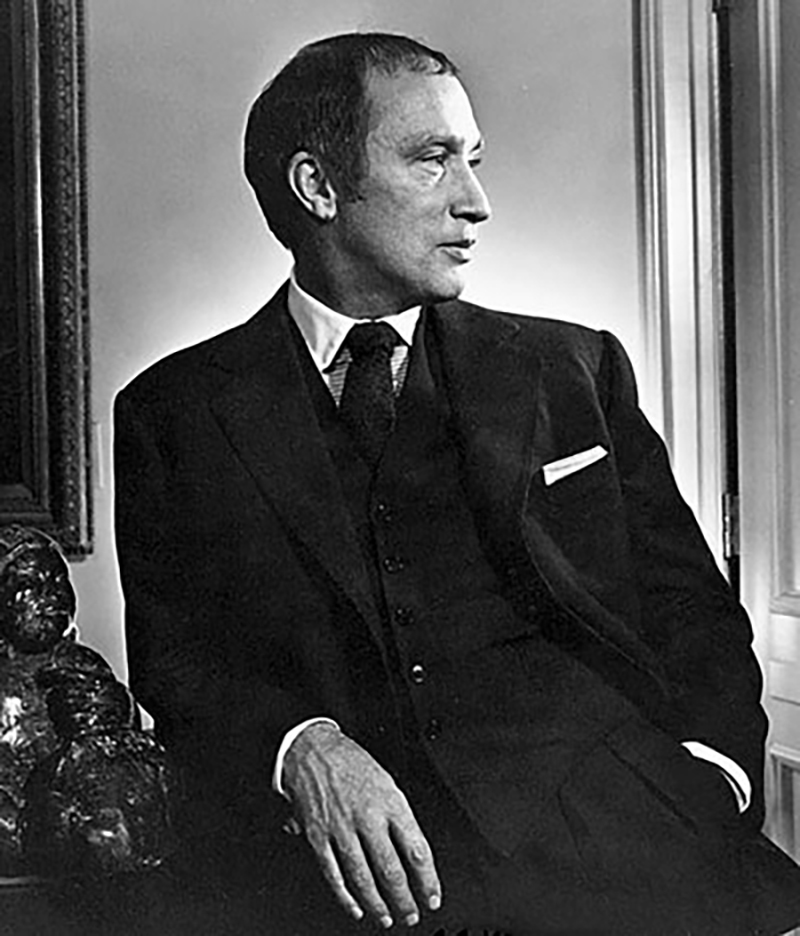
So where did two well-educated, left-leaning intellectuals, destined to lead two of the most stable democracies in the world stand on other issues of their day?
Interestingly, due to their belief in separation of church and state, both men — despite their religious convictions — ran afoul of church authorities for their public policy stances on contentious issues such as abortion and birth control.
Trudeau also took heat from the church when he was justice minister for introducing in December 1967 Bill C-187, which allowed for divorce on grounds of marriage breakdown. The bill was passed into law in 1968 after Trudeau became prime minister. Prior to 1968, adultery was almost the only and the principal basis for divorce in those Canadian provinces which had divorce courts. Some provinces, such as overwhelmingly Catholic Quebec, had no access to judicial divorce prior to 1968, meaning the only process available to terminate a marriage was through a private member’s bill passed through Parliament.
Unlike Trudeau, Obama has not had to deal with the issue of divorce law because starting in the mid-1950s several U.S. states and courts recognized the validity of “no-fault” divorces based on general incompatibility or irreconcilable differences. By the 1970s, the principle of no-fault divorce had spread from California to many states across America. In October 2010, New York became the last state in the union to pass “no-fault” divorce law, meaning no-fault divorce is now legal in all 50 U.S. states and in the District of Columbia.
The abortion debateTrudeau, as minister of justice before he became prime minister, introduced omnibus Bill C-150 in 1967 modifying the Criminal Code to allow for a legal abortion in Canada in circumstances where it was necessary to protect the life or health of the mother. Known at the time as Section 254 [now Section 287(4)] of the Criminal Code, it stipulated that an abortion could be carried out in an approved or accredited hospital if a therapeutic abortion committee made up of three doctors signed a statement indicating that the mother’s life or health would likely be endangered if the pregnancy continued. Abortion in any other circumstances or for any other reason was still an indictable offence punishable by life in prison — as it had been since 1869. The legislation was passed into law in May 1969 after Trudeau became prime minister.
However, Trudeau said in a Toronto Star interview published on February 23, 1982, that “generally speaking, abortion is wrong and marriage should be forever.” He later went on to say that although he had strong moral values, based on his Catholicism, he did not feel that he could impose his convictions on other people. In a speech in the mid-1970s, he had expressed the opinion that the final choice should be left in the hands of women and competent physicians.
Forty years after Trudeau opened the door to abortions intended to save a mother’s life or protect her health from serious risks and only under strict conditions in a specified place and if ratified by a “therapeutic abortion committee” consisting of three medical doctors, Obama’s position on abortion, compared with Trudeau’s, is more liberal because he would not restrict it only to circumstances where the mother’s life or health was in danger. In the 2008 Democratic primary presidential debate hosted by MSNBC, Obama said: “You know, I think that most Americans recognize that this is a profoundly difficult issue for the women and families who make these decisions. They don’t make them casually. And I trust women to make these decisions, in conjunction with their doctors and their families and the clergy. And I think that’s where most Americans are.”
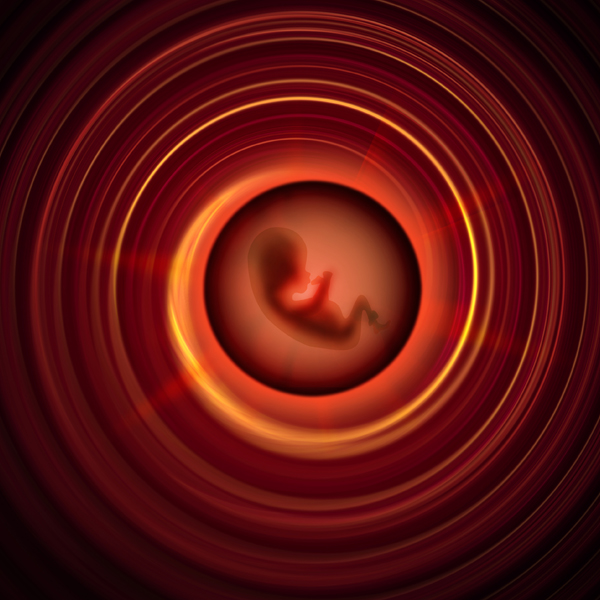
In Canada, abortion has not been a crime since 1988, when the Supreme Court struck down that section of the Criminal Code ruling that therapeutic abortion committees (made up of doctors) were not uniformly available to women throughout Canada. This, they ruled, violated a woman’s right to “security of the person” in Article 7 of the Charter of Rights and Freedoms (also brought in by Trudeau in 1982), which stipulates that “everyone has the right to life, liberty and security of the person and the right not to be deprived thereof except in accordance with the principles of fundamental justice.”
The Supreme Court reasoned that a woman could be placed in a situation of being forced to choose between an illegal abortion because it was done without such approval, or putting her health or life at risk. The court made it clear that Parliament could pass Criminal Code provisions restricting abortion. Despite attempting to do so, Parliament has not succeeded in achieving that outcome. As a result, there is no law restricting abortion in Canada, which is legal throughout pregnancy, although the vast majority of physicians will not abort a viable fetus (post 20 weeks gestation), except for serious medical reasons.
Abortion law in the U.S. is a state criminal law jurisdiction, but all laws must comply with the U.S. Constitution, which since the 1973 Supreme Court judgment of Roe vs. Wade has allowed legal abortion with increasing restrictions on its availability as the fetus develops.
Birth control, gay rights and cannabisTrudeau’s omnibus Bill C-150, introduced in the House of Commons in December 1967, also decriminalized homosexual acts performed in private by consenting adults. Trudeau said at the time “the state has no business in the bedrooms of the nation.” The bill, which passed into law on May 14, 1969 — a year after he had become prime minister — also imposed new gun ownership restrictions and repealed antiquated Criminal Code statutes outlawing birth control.

As with the abortion issue, Obama’s stance on birth control is more expansive than Trudeau’s in that he wants private health insurers under his new health care law, which was to take effect in 2014, to pay for birth control. In Canada, government health insurance does not cover birth control, although private health insurance may.
On the issue of lesbian, gay, bisexual and transgender rights (LGBT), the Obama administration has indicated that gay rights are fully equal to other basic human rights. As for gay marriage, Obama, who convinced the military in 2011 to lift its ban on openly gay service members, had stopped short of backing same-sex marriages, saying only that his personal views on the matter were evolving. That evolution resulted in his announcement on May 8, 2012 — in the middle of an election campaign against Republican challenger Mitt Romney, who opposes gay marriage— that he now supports same-sex marriage.
"At a certain point, I've just concluded that for me personally it is important for me to go ahead and affirm that I think same-sex couples should be able to get married," Obama said in an interview with ABC News. He said that his wife, daughters and friends had influenced him in changing his mind.
"I had hesitated on gay marriage, in part because I thought that civil unions would be sufficient," he said. "I was sensitive to the fact that for a lot of people the word 'marriage' was something that invokes very powerful traditions and religious beliefs. I've always been adamant that gay and lesbian Americans should be treated fairly and equally."
LGBT rights in the U.S. vary from state to state, although sexual acts between persons of the same sex have been legal nationwide since 2003, after a Supreme Court ruling in Lawrence v. Texas. Through September 2013, same-sex marriage licenses were available in 13 states — Vermont, New Hampshire, New York, Connecticut, Massachusetts, Iowa, Delaware, Maine, Maryland, Minnesota, Rhode Island California and Washington. The District of Columbia and several counties in New Mexico also issue same-sex marriage licenses.
On June 26, 2013, the U.S. Supreme Court gave impetus to the legalization of gay marriages in various states when it issued a 5-4 decision striking down as unconstitutional Section 3 of the 1996 federal law known as The Defense of Marriage Act (DOMA), which allowed states to refuse to recognize same-sex marriages performed under the laws of other states or countries.
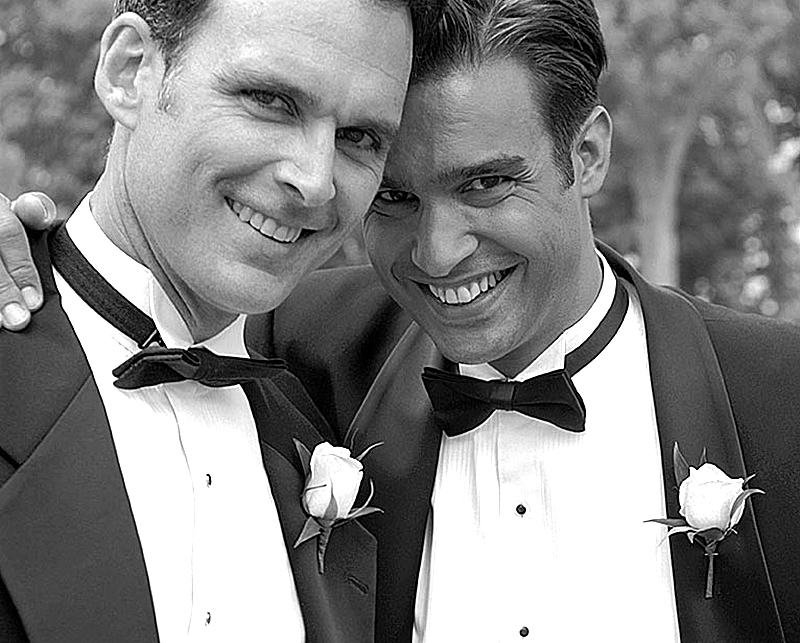
Contrast this with LGBT rights in Canada, which has legally allowed homosexual acts between consenting adults since Trudeau passed his Bill C-150 into law in May 1969. As well, LGBT Canadians have the same legal rights as non-LGBT citizens. In July 2005, Canada legalized same-sex marriage nationwide through parliamentary passage of the Civil Marriage Act, following in the steps of the Netherlands, Belgium and Spain. Since then, six other countries have make same-sex marriage legal on a national basis: Argentina, Iceland, Norway, Portugal, South Africa and Sweden.
On the issue of cannabis, popularly known as marijuana, it is illegal to either grow it or consume it in both the U.S. and Canada, other than in certain specified circumstances for medicinal purposes in Canada and, likewise, in 20 U.S. states, including California, and in the District of Columbia. Fourteen states have enacted steps to decriminalize it.
Massachusetts approved a ballot measure during the November 6, 2012 presidential election, making it the 18th state to legalize medical marijuana, while voters in Arkansas, by a narrow 51 percent majority, defeated a ballot measure on election day that would have made it the first state in the south to legalize medical marijuana. Meanwhile, Washington state and Colorado residents voted on election day 2012 to legalize the recreational use of marijuana, which could create a showdown with the federal government if it enforces national laws banning the drug, which it had so far declined to do as of fall 2013.
Possession or use of marijuana has been a crime in Canada since 1923 and in the U.S. since 1970 when Congress passed the Comprehensive Drug Abuse Prevention and Control Act adding marijuana to its list of controlled substances. The U.S. Supreme Court ruled in the 2005 case of Gonzales v. Raich that the commerce clause of the U.S. Constitution permits the U.S. Congress to criminalize the production and use of home-grown cannabis even in the 16 states and D.C., which approve its use for medicinal purposes.
In Canada, Trudeau empowered the LeDain Commission of Inquiry in 1969 to delve into the non-medical use of drugs. Its interim report in June 1970 called for the decriminalization of all recreational drugs, an explosive recommendation which would have legalized marijuana and would have called for a fine of only $100 for possession of any narcotic substance, including cocaine and heroin. The LeDain recommendations were never acted upon.
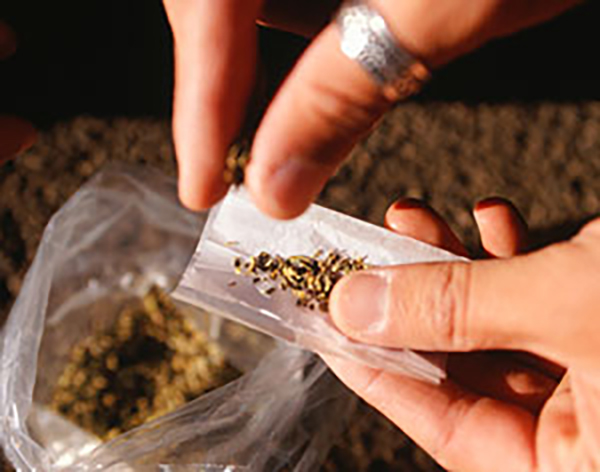
On March 12, 2012, the Conservative government of Prime Minister Harper passed through Parliament an omnibus bill of Criminal Code amendments, known as Bill C-10. Among other measures, it imposes a minimum sentence of six months in prison upon conviction of growing between six and 200 marijuana plants, and a one-year minimum sentence for an accused convicted of growing between 201 and 500 such plants. The new law increases the maximum sentence for producing marijuana to 14 years from the seven-year maximum previously in force.
Compare the Conservative Party position with that of the Liberal Party of Trudeau, led in 2012 by interim leader Bob Rae, which passed a resolution on January 15, 2012 calling for the legalization of marijuana. Justin Trudeau, Pierre Trudeau’s eldest son who replaced Rae as Liberal Party leader in 2013, admitted in an interview in August 2013 that he had smoked marijuana both before and after he became a Member of Parliament in 2008.
As he eyed the next federal election expected in 2015, Justin Trudeau said he favoured legalizing marijuana, which he believes would help the government save hundreds of millions of dollars in futile enforcement of criminal marijuana laws while also giving it more control to keep the substance out of the hands of underage smokers.
Obama’s personal position on the issue, as stated in January 2004 when he was a member of the Illinois Senate, was: “The war on drugs has been an utter failure. We need to rethink and decriminalize our marijuana laws. But I’m not someone who believes in legalization of marijuana.” Obama admitted in a television interview in 2006 to smoking marijuana “when I was a kid”. So on the issue of marijuana, Obama is actually more conservative than the Liberal Party of Canada, but more liberal than the Conservative Party of Harper.
Centralized powerWhen in power, Obama and Trudeau shared other common policy positions. Constitutional legal experts, they both used federal powers to intervene in the economy and they both fought to expand their respective central government’s powers, in comparison with provincial and states’ jurisdictions.
In Trudeau’s first term of office starting in 1968, some critics said he undermined Parliament and the role of cabinet by centralizing power in the Prime Minister’s Office and through central agencies, such as the Privy Council Office and the Treasury Board. Therein, we find what some construe as a contradiction between Trudeau’s passion for protecting individual rights and his drive to consolidate the power of the central government. This federal consolidation alienated provinces which sometimes felt that he had usurped their jurisdiction to the detriment of their citizens’ rights, such as with his National Energy Program involving Alberta in October 1980.
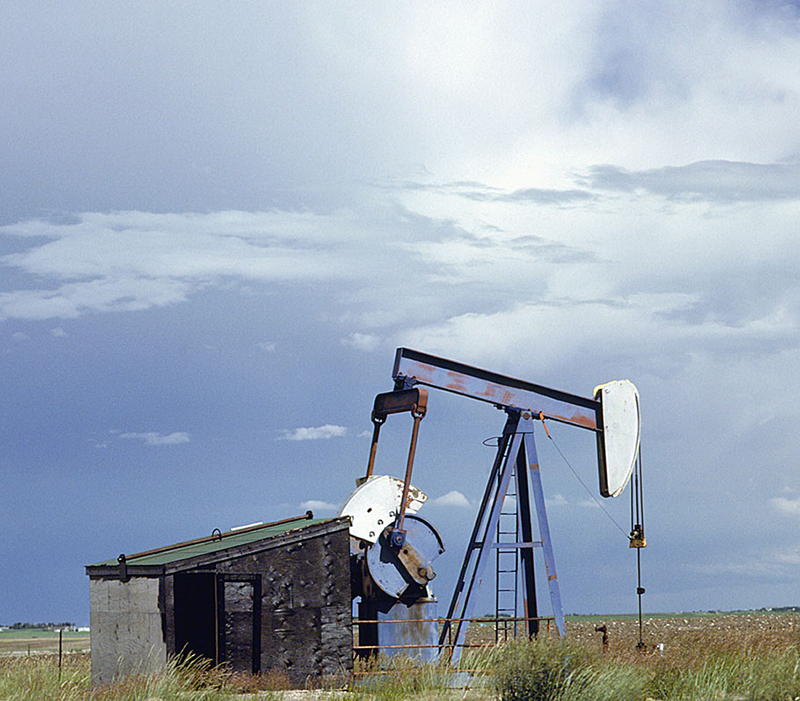
Professor John von Heyking, who teaches political theory and political philosophy at the University of Lethbridge, has written of the former prime minister that “Trudeau’s vision of the sacredness of the individual had a difficult time being reconciled with his view that the state dominate civil society.”
As an example of that contradiction, Heyking cites the example of Trudeau expressing sympathy for former Polish Communist General Wojciech Jaruzelski when the general imposed martial law on Poland in 1981 and banned Solidarity. “Solidarity, led by future president Lech Walesa, would later be the catalyst for the downfall of communism in eastern Europe and for the great civil society movement there,” Heyking wrote.
Contradictions could also be found in Trudeau’s defence of provincial rights prior to his taking power, compared with his consolidation of federal power after he became prime minister. For example, in his book published in 1968, Federalism and the French Canadians, Trudeau wrote an impassioned plea for more provincial autonomy in the area of federal grants to universities. That same year, while campaigning for leadership of the Liberal Party, he spoke in favour of more provincial input into how federal monies should be spent in the various regions of the country. He said in a speech in Halifax: “The idea that what is good for the country is good for all regions should be departed from.”
One area in which there was never any ambiguity was Trudeau’s anathema towards the idea of an independent Quebec separating from the rest of Canada. He was also a staunch foe of special status for his home province, which claimed that its unique French character entitled it to rights, such as those involving foreign policy, traditionally the unique domain of the federal government. Writing in Cité Libre in 1961, Trudeau dismissed separatism as a phony and outdated issue, saying nationalists were reactionary, and nationalism was irrelevant to the major concerns of Quebec.
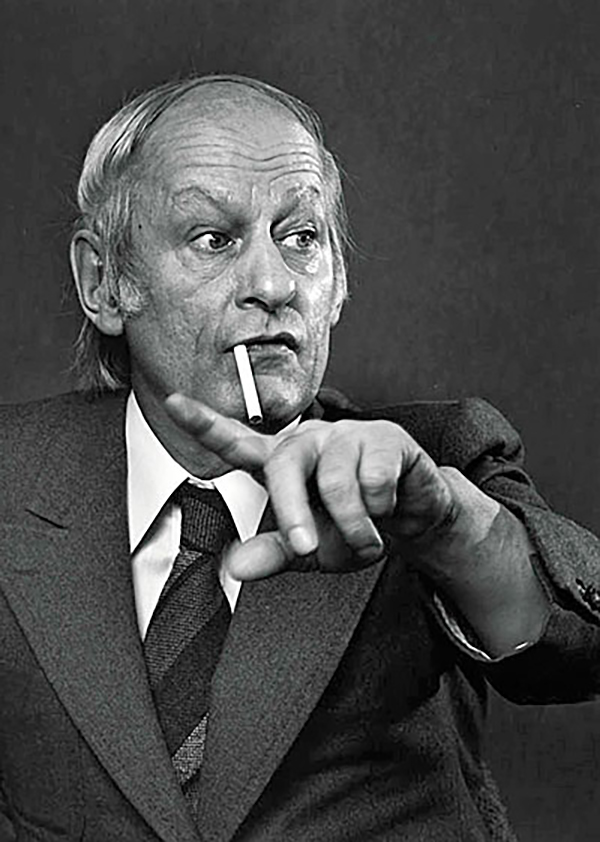
When he came to power, Trudeau introduced the Official Languages Act, which made both French and English the official languages of Canada, which meant, among other things, that product labeling had to be done in French, as well as English. The legislation encouraged more francophones to join the federal civil service.
These measures created an anti-bilingual backlash in predominantly English-speaking Western Canada, where voters felt Trudeau was out of touch with their economic problems. That feeling was reinforced in October 1980 when Trudeau introduced his National Energy Program (NEP), which allowed the federal government to impose a surtax on oil and natural gas pumped from Western Canada.
The surtax revenue was to be used to subsidize the price of imported oil for consumers in eastern Canada who had been ravaged by skyrocketing world oil prices in the 1970s. Western Canadians saw it as an intrusion on provincial ownership of natural resources. The Calgary headquarters of the Crown’s oil company, Petro-Canada, was derisively called “Red Square” by irate Westerners. With world oil prices falling in the 1980s, the Conservative government of Prime Minister Brian Mulroney, elected in 1984, scrapped the NEP in 1987. Petro-Canada was privatized in 1991 and acquired in 2009 by Suncor Energy.
Both Trudeau and Obama also share the unenviable distinction of overseeing governments which ran huge deficits — Obama in his first term of 2008-2012 and Trudeau in his 1980-1984 mandate.
Conservative Canadian columnist David Frum, writing in the March 23, 2011 issue of the National Post, called Trudeau a “disastrous prime minister”, but his opinion is not shared by most Canadians, who since 2007 have annually voted Trudeau as Canada’s best prime minister since 1968.
The poll, done every year since 2007 by Angus Reid Public Opinion, showed that in 2011 Trudeau garnered 36 percent of the vote of 1,002 randomly selected Canadians as Canada’s best prime minister. Current Prime Minister Harper is their second choice as best prime minister with 19 percent of the vote. The poll has a margin of error of plus or minus 3.1 percent.
Mario Canseco, vice-president of Angus Reid Public Opinion, said in an interview in the National Post of August 16, 2011 that if Albertans were not included in the polling, Trudeau’s popularity could be as high as 50 percent.
In 1999, Trudeau was selected by The Canadian Press news agency as the Newsmaker of the Century based on a criterion of “lasting significance”. Among those former prime ministers who finished in the Top 10 behind Trudeau were Wilfrid Laurier, Mackenzie King, Lester Pearson and Brian Mulroney.
Suspension of civil libertiesIn positive terms of what he is remembered for, Trudeau faced down Quebec separatists when they resorted to kidnapping and, ultimately, murdering a provincial cabinet minister in 1970. Obama has also faced terrorist threats, which led to his taking an unpopular decision on December 31, 2011 to suspend the civil liberties of terrorist suspects.
In Obama’s case, the enemy was Muslim jihadists intent on attacking U.S. interests. As a result on December 31, 2011, while vacationing in Hawaii, Obama signed into law the National Defence Authorization Act (NDAA) for Fiscal Year 2012, which codifies the president’s authority to detain indefinitely in military custody anyone, including U.S. citizens on U.S. soil, suspected of terrorism or supporting terrorists. Those detained do not have the right to legal counsel or a trial, and could face execution.
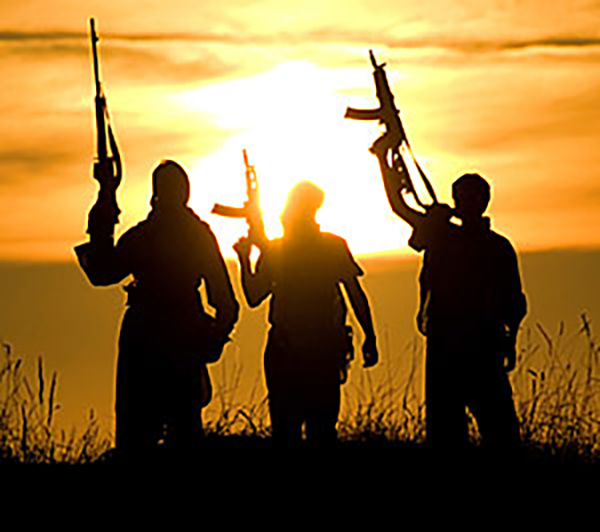
Professor Jonathan Turley of the George Washington University Faculty of Law, writing on his blog and in the British newspaper, The Guardian on January 2, 2012, described it this way: “With Americans distracted with drinking and celebrating, Obama signed one of the greatest rollbacks of civil liberties in the history of our country…and citizens partied in unwitting bliss into the New Year.” Turley went on to say: “The almost complete failure of the mainstream media to cover this issue is shocking.” Of Obama, he wrote: “…as confirmed by Senator [Carl] Levin, the White House conducted a misinformation campaign to secure this power while portraying the president as some type of reluctant absolute ruler or, as Obama maintains, a reluctant president with dictatorial powers.”
The White House “misinformation campaign” alluded to by Turley refers to a statement by Democratic Senator Carl Levin of Michigan in which he said that it was the White House itself which had asked the Senate Armed Services Committee “to remove language from the bill that would have prohibited U.S. citizens’ military detention without due process.”
Two polls of close to 400 Americans each showed low support for the bill — one had a 2 percent approval rating and the other had a 9 percent approval rating. To avoid the same hornet's nest of bad publicity with the NDAA for Fiscal Year 2013, the House of Representatives included Section 1029 which affirmed the right of habeas corpus and due process for American citizens. But Obama still came in for criticism from civil liberty groups for a provision which prevented the closing of Guantanamo Bay detention camp in Cuba, which had been a promise of his dating back to his first presidential campaign in 2008.
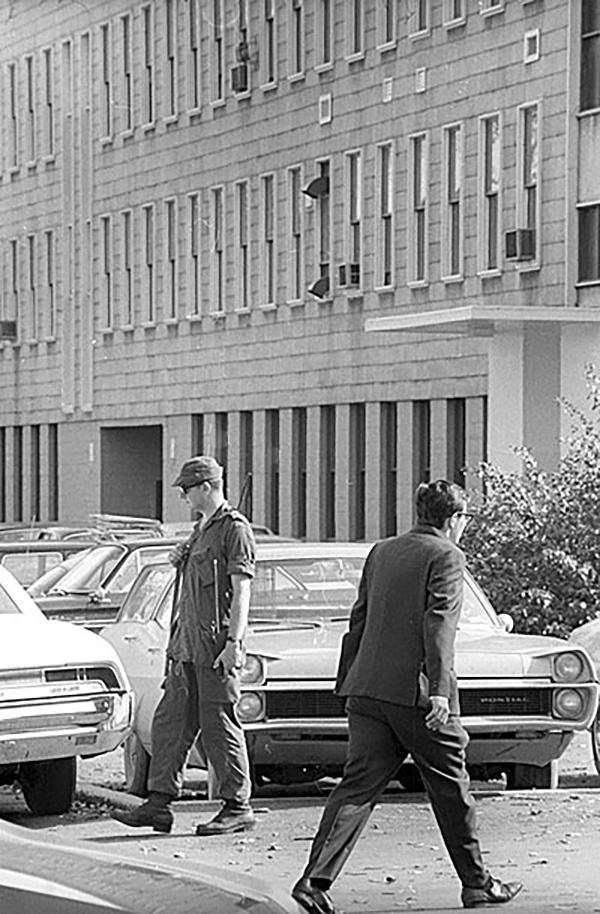
Trudeau also suspended civil liberties, invoking on October 16, 1970 the only peacetime use of the War Measures Act in the history of Canada after separatists of the Front de libération du Québec (FLQ) kidnapped British Trade Commissioner James Cross and Quebec Labour Minister Pierre Laporte. A day later, Laporte, a former journalist with Le Devoir who had been a classmate of Trudeau’s at College Brébeuf, was strangled to death by his FLQ kidnappers and his body dumped in a car trunk. Unlike Obama’s action in 2011, Trudeau’s was popular with the great majority of the public — up to a 92 percent approval rating, according to polls done at the time.
Unlike Obama, who tried to distance himself from what he had done, Trudeau, with his usual air of bravado, when asked by reporters three days prior to his invoking the War Measures Act just how far he would go to combat terrorism, replied: “Well, just watch me.”
Contrast that reaction with Obama’s statement after he extended the power of military detention through the NDAA on December 31, 2011: “The fact that I support this bill as a whole does not mean I agree with everything in it. In particular, I have signed this bill despite having serious reservations with certain provisions that regulate the detention, interrogation, and prosecution of suspected terrorists. “
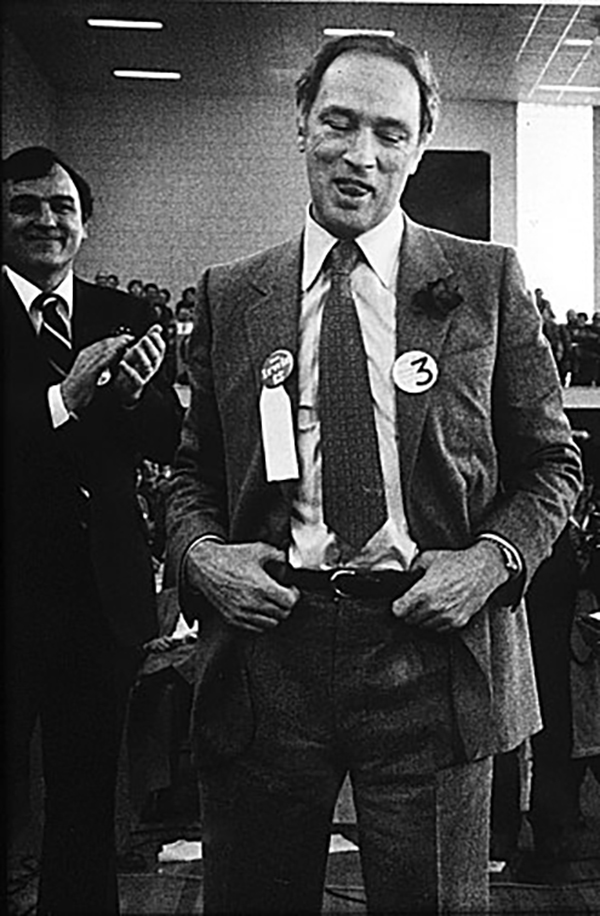
The War Measures Act provisions were replaced by the Public Order Act in November 1970, which itself expired on April 30, 1971. The NDAA is in force for 2012 and could be renewed next December as part of U.S. defence funding for 2013.
In terms of protecting the individual rights and freedoms of citizens, Trudeau was a giant, setting the bar high with his historic patriation from Britain in April 1982 of the British North America Act, Canada’s Constitution, with an amending formula for future changes and with a constitutionally-enshrined Charter of Rights and Freedoms. During the last three decades, the charter has been the basis of numerous court challenges and judgments transforming Canadian jurisprudence. It is touted by international legal experts as a model for constitutional drafters throughout the world.
Due to its demands for special constitutional status, which Trudeau opposed, Quebec did not agree with the other Canadian provinces on the patriation of the Constitution and did not sign the document, although the province — like all regions of Canada — is governed by it.
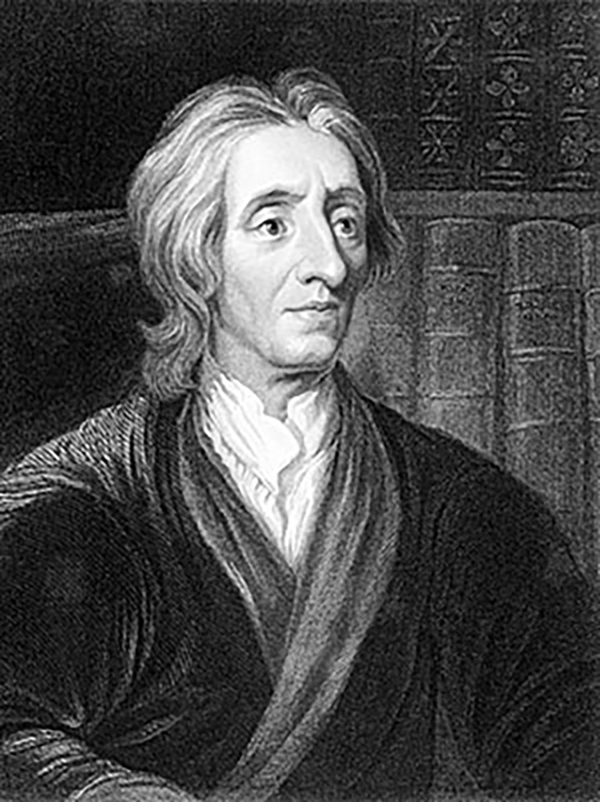
There is an interesting footnote to the constitutional debate which preceded enactment of the Charter of Rights and Freedoms in 1982: Trudeau had to leave out of the document protection of property rights because he could not gain a consensus on that point among the provinces, some of which feared such a constitutional guarantee would nullify provincial legislation regulating land ownership and usage. There was also no consensus on what the definition of property should be — for example, only tangible assets such as land, property, stocks, and bonds; or also intangibles such as databanks, trademarks, copyright and government benefits for welfare, old age and unemployment.
By comparison, the U.S. Constitution — in line with the 17th century principles of John Locke, one of the Enlightenment philosophers who most influenced Trudeau’s thinking about the role of government —entrenches tangible property rights and has been interpreted to protect intangible property, as well.
(Despite the fact that Trudeau was not able to enshrine property rights in the Charter of Rights and Freedoms, Canadians still enjoy legal protection of their property rights through the Canadian Bill of Rights passed into law in 1960 by the Conservative government of then-prime minister John Diefenbaker and by virtue of Canada being a signatory to the Universal Declaration of Human Rights adopted in 1948 by the United Nations.)
A study by professors David S. Law of Washington University in St. Louis and Mila Versteeg of the University of Virginia — which was to be published in June 2012 in The New York University Law Review — concludes that the U.S. Constitution is losing influence as a model for emerging democracies around the world, replaced by the Canadian Charter of Rights and Freedoms.
New York Times, February 6, 2012.
The New York Times of February 6, 2012 cites the study and quotes U.S. Supreme Court Justice Ruth Bader Ginsburg as saying during a television interview in Egypt the week before that, “I would not look to the United States Constitution if I were drafting a constitution in the year 2012.” Instead, she recommended as role models the South African Constitution, the Canadian Charter of Rights and Freedoms, or the European Convention on Human Rights.
The study’s authors suggest that the U.S. Constitution has lost its appeal to emerging democracies because it is rigid, guarantees relatively few rights, has been interpreted too closely to its original 18th century meanings by the Supreme Court, and is too difficult to amend.
Aharon Barak, then president of the Supreme Court of Israel, wrote in the Harvard Law Review in 2002 that the Canadian Charter of Rights and Freedoms “serves as a source of inspiration for many countries around the world” and is, as described by New York Times’ writer Adam Liptak, “the new constitutional superpower.”
Among the reasons cited in the New York Times article of February 6, 2012 for such exalted status:
The Canadian Charter is both more expansive and less absolute. It guarantees equal rights for women and disabled people, allows affirmative action and requires that those arrested be informed of their rights. On the other hand, it balances those rights against “such reasonable limits” as “can be demonstrably justified in a free and democratic society.”
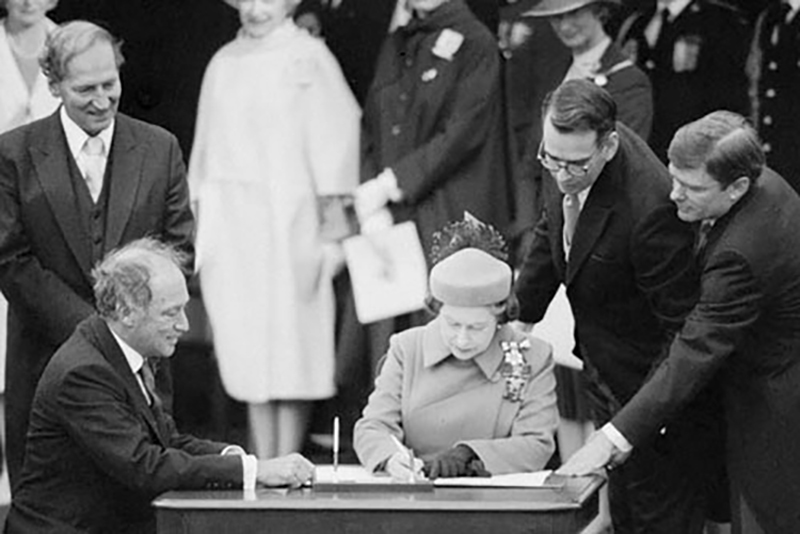
Such high praise for a constitutional document —in this case Canada’s Charter of Rights and Freedoms — needs must capture the attention of a former constitutional law professor, such as Obama, who was already fond of Canada even before he discovered that it has a cool Constitution. In fact, his Canadian brother-in-law, Konrad Ng, who studied philosophy at McGill University, told journalists that in 2003 Obama and his family quite enjoyed themselves in Canada, attending the wedding of Ng and Obama’s half-sister, Maya Soetoro, in Burlington, Ontario.
Like most tourists coming to the Toronto area, Obama — who was then still a member of the Illinois Senate — and his family visited Niagara Falls. Obama commented to his future brother-in-law at the time that Toronto reminded him of Chicago and, of course, he couldn’t refrain from talking about the pitched NBA battles between the Toronto Raptors and his beloved Chicago Bulls.
Almost six years later, Obama was back in Canada, this time as president on his first official visit to a foreign capital, Ottawa. He hadn’t yet got his feet wet in office, but Canada already loved him based on the electrifying election campaign which had propelled him into the White House as the first African-American president.
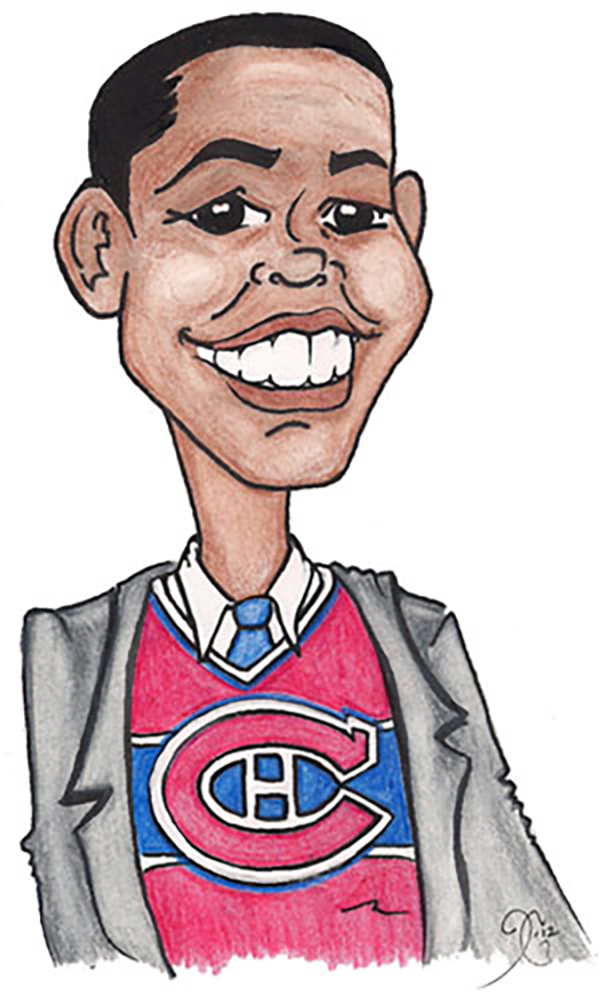
Thousands cheered him in the streets of Ottawa that February day in 2009, and he received the ultimate compliment when a local bakery created a flattened, fried doughnut called the ObamaTail, patterned after a Canadian pastry chain that makes a hand-stretched doughnut known as a BeaverTail.
And if all that love isn’t enough to convince Obama that he and his family have a future in Canada, perhaps he should consider the first ever United Nations World Happiness Report made public on April 2, 2012, which indicated that Canadians are ranked as the fifth happiest people in the world out of 156 countries surveyed. The United States came in at 11th and the United Kingdom at 18th. The first four countries ahead of Canada, in order, were Denmark, Finland, Norway and the Netherlands.
Economist John Helliwell, who teaches at the University of British Columbia and was co-editor of the 155-page report, said five happiness factors were taken into account in the survey: family, good health, income, sense of freedom and lack of corruption. Canada performed better than the U.S. in all categories other than income, he said.
The results were based on surveys, taken every year for five years, of 1,000 people in each country. The report concluded that “while basic living standards are essential for happiness, after the baseline has been met happiness varies more with quality of human relationships than income.”
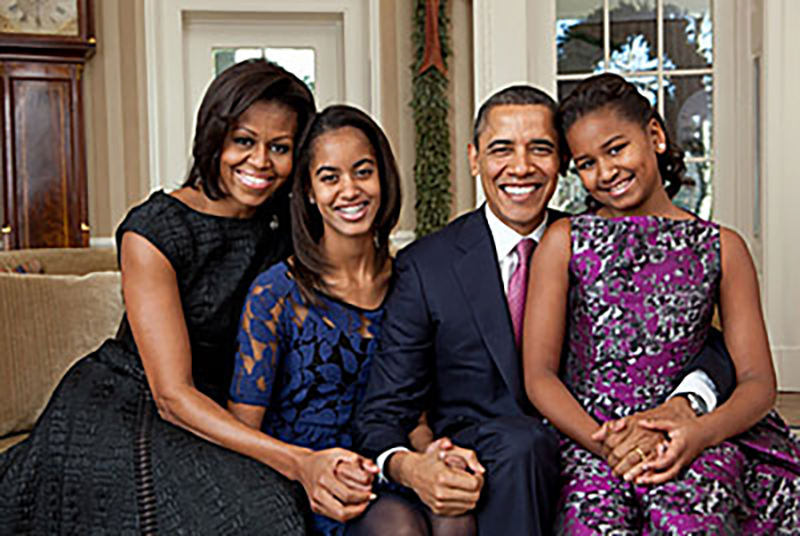
While Obama cannot at this point be placed in the pantheon of great leaders where many Canadian voters consider Trudeau to be, one should remember that as of the end of 2012 Obama had been in office for only four years, compared with a tenure of 16 years as prime minister for Trudeau. One should also take account that the foreign policy decisions of an American president are constantly under the scrutiny of the world press, whereas a Canadian prime minister does not play a central role on the world stage. So although Obama vacillated and showed weakness in his Middle East policies in the first year of his second mandate, who is to say that Trudeau would have been any more of a decisive leader on the world stage had he been thrust into a similar spotlight? The love affair Canadians have had with Obama up to now is likely still burning strong despite his fall from grace in the eyes of some civil libertarians who feel he has not portrayed himself with distinction as the leader of the free world.
The affection of many Canadians towards Obama is reminiscent of a Letter to the Editor published in April 1968 in the The Telegram, a Toronto daily newspaper which closed its doors in 1971. The writer was a Texas woman who was obviously smitten with Trudeau, who had just been chosen leader of the Liberal Party. She wrote:
What charm, what flair, what intelligence, what capacity for uniting opposites. How wonderful it would be if he could replace our tired-out, repetitious candidates for President, and unite Canada with the U.S. under his dynamic and enthusiastic leadership with the slogan “One America”. Vive Trudeau!
Obama’s 8-year-old Canadian niece, Suhaila Ng, and her younger sister, Savita, who call him “Uncle Rocky”, are likely among the millions of Canadians who would echo the sentiments of the Texas lady, but this time in relation to Trudeau’s kindred political counterpart who now sits in the White House but could someday have a political career in Canada, if he so chooses.